
ELITE WINGS © 2023 ELITE WINGS MEDIA MAGAZINE Issue 02 | 2023 WWW.ELITE-WINGS.COM CONNECTIVITY GUIDE 2023 BUSINESS JETS

ELITE WINGS MAGAZINE
ISSN 2816-4040
PUBLISHED BY: ELITE WINGS MEDIA MONTREAL, QUEBEC CANADA
WWW.ELITE-WINGS.COM
LinkedIn:/ ELITE-WINGS
EDITOR-IN-CHIEF
Abdelmajid Jlioui abdelmajid.jlioui@elite-wings.com
+1 (438) 926 7525
DIRECTOR CONTENT STRATEGY
Viswanath Tata
Viswanath.tata@elite-wings.com
+1 (438) 355 1961
CONTENT ADVISORS
Patrick Janvier
Antoine Chereau
Les Purkhardt
Sonia Yeara
CONTACTS
Editorial| editorial@elite-wings.com
Advertising| ads@elite-wings.com
General Inquiries| info@elite-wings.com
About ELITE WINGS
Elite Wings is on a mission of providing timely, structured, validated, unbiased, and relevant business aviation intelligence.

Front Cover Picture: Bombardier Global 7500 ©BOMBARDIER
Back Cover Picture: ©Gogo
ELITE WINGS MEDIA
ELITE WINGS MAGAZINE (ISSN 2816-4040) IS PUBLISHED SIX TIMES PER YEAR (JAN/FEB, MAR/APR, MAY/JUN, JUL/AUG, SEPT/OCT, NOV/DEC) BY ELITE WINGS MEDIA, MONTREAL, CANADA.

Any information of a technical nature contained in this document may contain inaccuracies and is subject to change and should never be relied upon for operational use
Copyright © 2023 All rights reserved. Reproduction in whole or in part without permission of ELITE WINGS MEDIA is strictly prohibited.
3 | ELITE WINGS MAGAZINE
WWW.ELITE - WINGS.COM

4 | ELITE WINGS MAGAZINE 08 Connectivity Market Update A review of the latest offerings and trends in business aviation connectivity market - by Valour Consultancy 12 Future Proofing your Connectivity Investment Exploring multi-connectivity solutions in a growing satcom network offering landscape - by Satcom Direct 22 In-Flight Connectivity Performance – it’s all about capacity Understanding how the network capacity is the ultimate enabler for delivering consistent, high-quality Wi-Fi 66 Bizliners Connectivity Update Looking at the latest trends and constraints in Bizliners connectivity installation with Aloft AeroArchitects and Lufthansa Technik Interviews 16 Bombardier Offering worldwide high-speed internet connectivity since 2016 26 SmartSky Networks The Next-Generation ATG Network, now available for CONUS fleet 34 Gogo Offering update from the The world’s largest provider of broadband connectivity services for the business aviation 40 Viasat Getting ready for the Terabit era 44 Inmarsat Introducing new connectivity solutions for current and future customers 48 SES / LuxStream Powering a flexible connectivity service for business aviation CONTENTS March | April 2023 Air To Ground Networks 31 Gogo Biz 4G 32 SmartSky Networks 33 Gogo 5G Satellite Networks - LEO 51 Iridium Certus 52 OneWeb 53 SpaceX – StarLink Satellite Networks - GEO L-Band 54 Inmarsat – SwiftBroadBand 55 Inmarsat – SwiftJet Ku-Band 56 SES – LuxStream 57 Intelsat – FlexExec Ka-Band 58 Inmarsat – Jet Connex 59 Viasat Ka-Band 60 Inmarsat – JX Evolution 2023 Business Aviation Connectivity Networks Guide




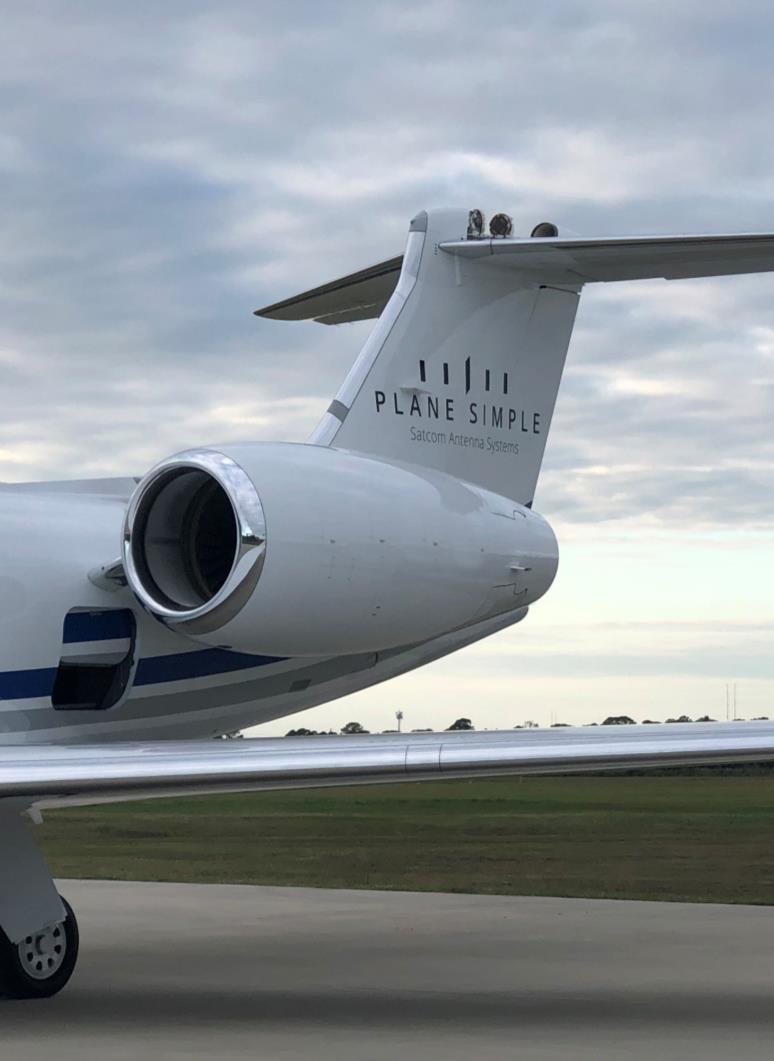

34 44 16 66 12 40
Getting to Grips With Business Aviation

CABIN CONNECTIVITY
By Abdelmajid Jlioui
The sky is not the limit anymore!
In a world where we’ve never been so connected, BusinessAviation is no exception. Today’s business jets passengers expect to be connected, productive, and entertained –anywhere they fly. With an ever-evolving technologies breakthrough and more and more sophisticated commercial offerings, it pays to understand the connectivity ecosystem evolution and what solutions are available or soon to be.
The sky is not anymore, the limit for home of office like high-speed connectivity.

6 | ELITE WINGS MAGAZINE
FOR THE LATEST NEWS AND UPDATES
VISIT THE ONLINE CONNECTIVITY GUIDE
Speed Reliability Latency Usage limitations 32% 9% 47 % 13% ELITE WINGS 2023 CONNECTIVITY POOL What is your number one business jet passengers' complaint about onboard Wi-Fi? ELITE WINGS MAGAZINE
THE CONNECTIVITY ECOSYSTEM
NETWORKS SERVICE PROVIDERS
Business aviation connectivity relies on the availability of communication networks covering the geographic area of operation. There are two types of networks used in aviation:

▪ Communication satellites-based networks (SATCOM)

▪ Ground stations-based networks called Air-ToGround (ATG).
AIRCRAFT HARDWARE
A large offering of cabin connectivity hardware is available in the market for either line-fit installation by the aircraft manufacturer or as a retrofit by MRO centers. The hardware can be divided into three main sub-systems, the antenna system including the radome and steering electronics, the avionics transceivers allowing for data reception and transmission to the antenna, and the cabin subsystem allowing for laptops, tablets, and smartphones to connect to the cabin network.
Most communication networks rely on business aviation dedicated service providers. These service providers offer tailored plans typically on a monthly subscription basis, as well as 24/7 technical support, billing, and value-added services to help manage usage and optimize bandwidth. These added-value services usually include: WIFI Call & Text apps, Acceleration and compression technology, Ground to Air Call service.
VENDORS & INSTALLATION
Cabin Connectivity installation is available from either the aircraft manufacturer for installation prior to aircraft delivery (Line-fit) or from a network of sales and installation providers in the after-market (Retrofit). These installation centers develop and install aircraft connectivity hardware through Supplemental Type Certificate (STC).
In opposition to the Line-fit market where the offering is very limited by the aircraft manufacturer, the retrofit market offers a large choice of solutions and should be considered even for newly delivered aircraft.

ELITE WINGS MAGAZINE | 7 Picture © Dassault Aviation 7 | ELITE WINGS MAGAZINE
2023 CONNECTIVITY GUIDE
2023 MARKET UPDATE
By Craig Foster, Senior Consultant & Co-Founder

VALOUR CONSULTANCY
For the last ten years, Valour Consultancy has provided its clients with unparalleled analysis of the market for In-Flight Connectivity (IFC) –in commercial air transport, as well as business aviation. In this article, we summarize the business aviation IFC landscape and provide hints as to its future direction.

8 | ELITE
WINGS MAGAZINE
ELITE
BUSINESS AVIATION IN-FLIGHT CONNECTIVITY
WINGS MAGAZINE
Picture: © Gogo
There are currently just over 40,000 business aircraft in the global fleet, a number comprised of approximately 24,000 business jets and about 16,000 turboprops.
Around two-thirds of all business jets are estimated to have some form of IFC system installed, although only 4% of turboprops are similarly equipped. Across all business aircraft, penetration of IFC stands at about 43% with our most recent forecast calling for this to reach 56% by the end of 2031.
The majority of IFC terminals installed on business jets today are lower bandwidth L-band solutions from Inmarsat or Iridium. Some 3,500 business jets are hooked up to Inmarsat’s SwiftBroadband (SBB) service, which provides maximum download speeds of 432 Kbps. In 2022, the firm announced a new service called SwiftJet which – thanks to an upgraded terminal developed by partner, Honeywell Aerospace – offers speeds of up to 2.6 Mbps. SwiftJet is due to enter commercial later this year. There are around 9,000 business aircraft currently installed with Iridium equipment, most of which use the firm’s low-earth orbit (LEO) satellite network for mobile telephony. While the original (Block-1) network provided download speeds of between 2.4 and 128 Kbps, Iridium’s upgraded constellation, NEXT, powers its new Certus solution. When paired with a high gain antenna, Certus can deliver download speeds of up to 704 Kbps. Future network upgrades will take this up to 1.4 Mbps. We estimate that it costs between $200,000 – $300,000 USD to fit an aircraft with L-band connectivity equipment, while monthly airtime pricing tends to be on a “pay per megabyte” basis whereby the more data you consume, the more you pay. A fixed monthly fee normally applies regardless of the amount of data consumed. Due to the smaller size of required fuselage mount antennas (compared to Ku- and Ka-band equivalents), L-band continues to be a popular option in the mid- and light-jet segments – especially outside of North America where no Air-to-Ground (ATG) alternative exists. At present, owners and operators of business aircraft in North America can choose from not one, but two competing ATG networks. About 7,000 aircraft – just over a quarter of the regional fleet – are connected to Gogo’s solution with many current customers expected to upgrade to the company’s new 5G network when it launches at the end of 2023. SmartSky Networks, which entered the fray with a rival offering in 2022, recently demonstrated its technology onboard a Cessna Citation X aircraft operated by North Carolina-based flyExclusive ATG is a popular option across business aircraft small and large thanks in the main to the rapid nature of
2023 MARKET UPDATE
BY VALOUR CONSULTANCY
installations and also because the required “blade” antennas are unintrusive and can be mounted on an aircraft’s side or belly. Additionally, ATG compares favourably to satellite systems in terms of up-front acquisition costs, while also providing comparable speeds. The manufacturer's suggested retail price (MSRP) of Gogo’s AVANCE L3 system, for example, ranges from $42,464 to $72,168, while AVANCE L5 equipment for a fresh install is $141,132. Equipment for a fresh installation of the 5G system is $221,736. Current hardware pricing for SmartSky Networks’ ATG offering is not known but the company has previously advertised introductory pricing of its “Flagship” system at $93,000, while the “LiTE” option which targets smaller business jets and turboprops (yet to be formally unveiled) has been touted at $50,000. The reader should note that these prices exclude installation costs.
As mentioned, ATG is not currently an option for operators based outside of North America, but this could change in future. Indeed, there is a possibility (albeit remote) that Inmarsat’s European Aviation Network (EAN) – used by several airlines in the region – is one day opened up to business aviation. The Middle East is another strong candidate for an ATG network, with similar traffic characteristics to Europe. In August 2022, SkyFive was confirmed to be involved in the next phase of a project to bring ATG to the Middle East after revealing that its three new investment partners would allow it to expand its presence in the region. Our expectation is that, in time, the network will spread to the countries surrounding Saudi Arabia, opening up the possibility of roaming with the neighbouring EAN.
In October 2022, Gogo completed the construction of 150 towers to support the launch of its new 5G service
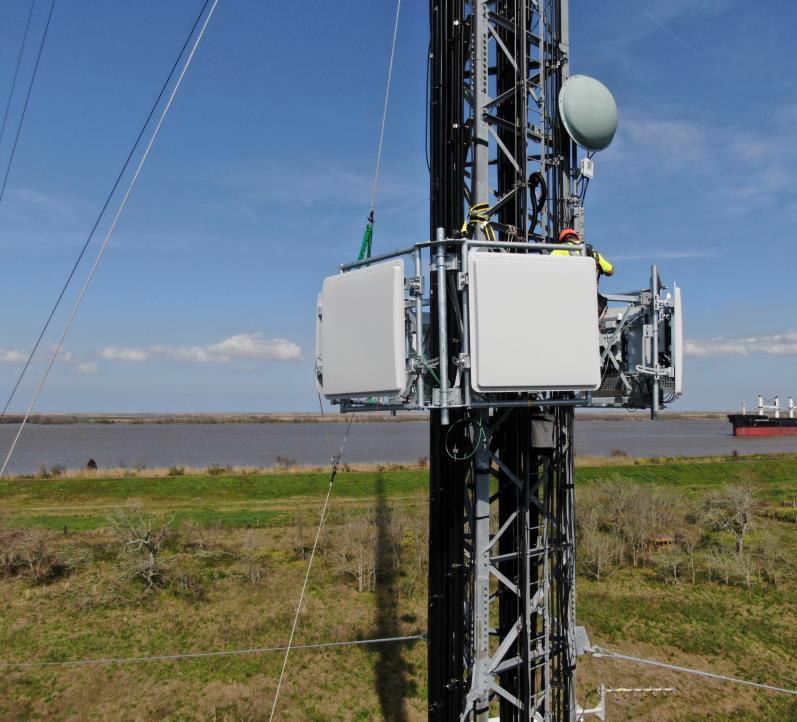
ELITE WINGS MAGAZINE | 9
Picture: © Gogo
UPDATE
Competition in the market is fiercest as you move up in size with Ka-band and – increasingly – Ku-band solutions popular options in the mid to larger jet segments where superfast connectivity that works consistently well in all regions of the world is the order of the day. Inmarsat currently dominates the landscape, and almost all new large cabin jets roll off the line with its Jet ConneX (JX) connectivity solution installed at the factory. At the time of writing, JX had been activated on more than 1,250 business jets JX is estimated to cost between $500,000 and $750,000 inclusive of labour. Service plans start at $10,000 per month for 30GB or data, while the previously top-end JX-Pro plan, which comes with an unlimited data allowance, costs over $60,000 per month. We say “previously” as Inmarsat launched JX Edge, the first in a new series of advanced, high-end service plans, at the end of 2022.
Exact details are unknown at this stage, but JX Edge reportedly offers “greater performance, speeds, and value for money” with Inmarsat doubtless expanding its service options in response to an ever-increasing array of solutions from competitors One such competitor is Viasat, which is, of course, currently in the process of acquiring Inmarsat With equipment for its rival Ka-band solution priced at $395,000 when purchased direct from the satellite operator and airtime starting at $2,795 per month for the base level regional plan and up to $13,995 for a global plan with an unlimited data allowance, it has quickly gained traction in the comparatively more pricesensitive super midsize segment.
Viasat currently accounts for the majority of the 300-400 business jets using Ku-band IFC even though it is expected to incentivise many of these customers to transition to Kaband as the ViaSat-3 constellation nears commercial readiness. The Ku-band arena is also home to newer solutions from Collins Aerospace and SES (LuxStream) and Satcom Direct and Intelsat (FlexExec) Both have amassed healthy backlogs that will be worked through in the coming years to add impetus to IFC market growth in the large cabin and, to a lesser extent, super midsize segments. Exact pricing for the former is unknown, but the new Plane Simple kit for FlexExec reportedly costs $235,000, excluding installation on the aircraft Both solutions have introduced more flexible “power by the hour” style service plans allowing operators to better manage operational costs according to time spent on the aircraft
Other notable players in the Ku-band realm include Anuvu, Panasonic Avionics (which provides service to IDAIR’s customers) and Gogo. The latter, of course, offers the 2Ku solution on bizliners and, thanks to the newly unveiled Gogo Global Broadband (GGB) LEO solution, will
soon be able to serve smaller aircraft with Ku-band connectivity from partner, OneWeb SpaceX is another notable name in the mix, having recently launched the new Starlink for Aviation LEO service. The company has already won the business of Hawaiian Airlines, airBaltic and ZIPAIR, while JSX is slated to complete roll-out of the service in Q2 2023 having begun installations at the end of 2022.
With Starlink for Aviation airtime priced at between $12,500 and $25,000 per aircraft, per month, it is safe to say that Elon Musk is initially targeting the large cabin and bizliner segments with the solution The company is charging $150,000 for the hardware needed to connect a jet to Starlink, on top of a one-off reservation fee of $5,000 Our expectation is that additional service plans more palatable to the mid and – perhaps – even the light jet segments, will be revealed in due course. Gogo and fellow OneWeb Value-Added Reseller (VAR), Satcom Direct, are due to say more about their own LEO service plans for business aviation towards the end of this year. Further down the line, we could well see business jets being connected to LEO constellations being developed by Telesat and Amazon (Kuiper) Indeed, in our most recent report on this subject, we project that LEO terminals (excluding those low bandwidth terminals connected to the Iridium network) will number just under 4,500 by the end of 2031 A key driver is the fact that these solutions promise to expand the total addressable market for highbandwidth connectivity to smaller airframes that do not operate within reach of an ATG network and that cannot accommodate the bulky gimballed Ku- and Ka-band antennas used to connect to non-LEO networks. Another is that LEO satellites can offer dramatically reduced latency, whilst at the same time allowing service providers to layer capacity in multiple orbits such that their aviation customers are always able to access reliable, high-speed satellite connectivity, anywhere in the world
As of March 2023, OneWeb has launched 618 satellites. Aviation services will be launched in 2024.

10 | ELITE WINGS MAGAZINE
2023 MARKET
BY VALOUR CONSULTANCY
Picture: © OneWeb
GSO and NGSO Satellite Connectivity Terminals on VVIP and Business Aircraft
A GSO orbit, often also referred to as a geosynchronous equatorial orbit (GEO), is a circular geosynchronous orbit 35,786 km (22,236nmi) in altitude above the equator in radius from Earth's centre and following the direction of Earth's rotation. Examples of satellite-based IFC services that fall into the GSO category include JX and SBB from Inmarsat, Viasat’s Ku-, Ka- and Dual-band solutions, as well FlexExec from Satcom Direct and Intelsat, LuxStream from Collins Aerospace and SES, and Gogo 2Ku.
NGSO (non-geostationary satellite orbit) capacity, on the other hand, refers to all satellite constellations that are not classified as being in GSO. NGSO can be broken down into the following three sub-categories:

▪ Low Earth Orbit (LEO)
▪ Medium Earth Orbit (MEO)
▪ Highly Elliptical Orbit (HEO)

2023 MARKET UPDATE BY VALOUR CONSULTANCY
Picture: © SpaceX
NGSO (exc. Iridium)
ELITE WINGS MAGAZINE | 11
NGSO
YOUR CONNECTIVITY INVESTMENT
In a multi-orbit offering landscape
By Iris Savage
Airborne connectivity represents a significant investment for an aircraft owner or operator. Satcom Direct is introducing a new generation of networkagnostic terminals designed with future-proof technologies for optimized connectivity investment.

FUTURE-PROOFING
| ELITE WINGS MAGAZINE
As any owner will attest to, installation and upgrading of connectivity equipment requires significant investment.

As the appetite for data continues to grow, it is vital to operational efficiencies and passenger experience that suitable connectivity solutions are selected. Connectivity users frequently compare the terrestrial experience, an experience characterized by a persistent, high bandwidth, low latency connection, with their aerial expectation. Replicating this experience in an aircraft at 45,000 feet flying near 0.9 Mach is a technical challenge. The aircraft is maneuvering frequently, the antenna and satellite are both in motion, and there are clouds and rain in between both, all of which affect latency depending on which orbit the satellite is on.

The Satcom Direct Plane Simple®, Ku-band tail-mounted antenna, the first in a series of antennas which, as the name suggests, simplifies the connectivity ownership experience, was commercially introduced in February 2023. The advanced technology antenna has numerous advantages over many existing options. Flexible pricing plans, uncomplicated installation, easy upgrade paths, only two LRUs (line replaceable units). It’s network agnostic and purpose-built for the business aviation sector.
Today operators require multiple connectivity solutions to achieve their performance and resilience requirements, and the right selection protects the investment in an evolving network provider landscape. There are a host of considerations when evaluating which solution to select and install. This is further complicated by the growth of opportunities delivered by multi-orbit options. No longer is it a case of choosing a single frequency, Ka or Ku-band, but more than ever, it requires analysis of usage, destinations, passenger numbers and airframe type.
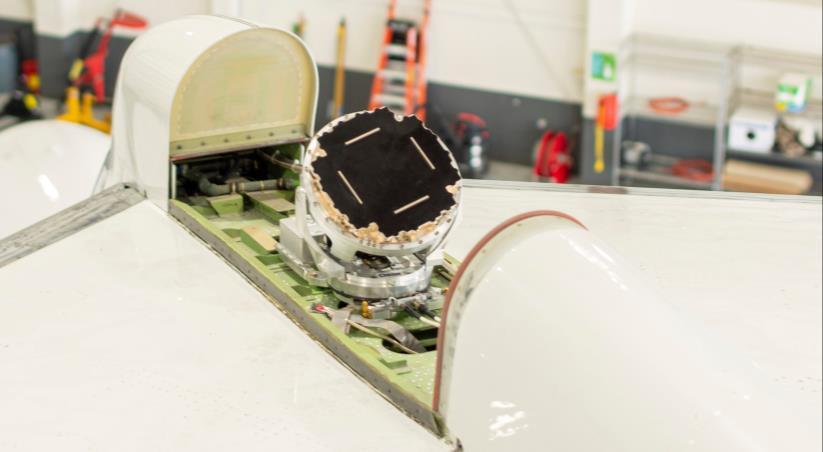
ELITE WINGS MAGAZINE | 13
the SD terminals, operators are assured that as their usage evolves, so will the terminal. With airframes designed and manufactured to last thirty years or more, and technology advancing at a rapid

Equipping the right aircraft antenna is also essential for data transmission to and from the aircraft. Two main technologies support antenna functionality. The gimbaled antenna physically moves to point the antenna to the connected constellation, and the electronically steered flat panel antennas, ESA, steer the beam electrically with limited or no moving parts. The challenge with aircraft antennas relates to the limited amount of space on which to install them. This is one of the motivations for the SD Plane Simple series to offer two formats, the compact tail mount or the flat panel fuselage mount, which is a scalable ESA.
The good news is that all constellations can provide nearglobal coverage as long as they can see a ground station, and the right mix of satellite networks can deliver unbroken coverage. “We anticipate that in the very near future, the multi-orbit offering will become the norm for aircraft that frequently fly around the globe, so it is essential to research all the variables. This is why we focus on putting the customer at the center of everything we do by providing a consultative approach to their needs,” explains Moore. Dependable, high-performance airborne global connectivity is now an expectation. With the Plane Simple modular, upgradeable terminals, customers can harness the different frequencies and orbits via multiple
network operators to assure the reliability and longevity of the airborne connection.
“Our solutions are designed to operate with existing and future network constellations. The current Plane Simple Ku-band terminal is connecting with the Intelsat FlexExec network, which has been purpose-built for the business aviation community, and our Ka-band solution is already connecting over the air with Inmarsat Jet ConneX. However, as new constellations come online, data demand heightens, customer expectations grow, and airframes generate more data than ever before, we can upgrade the system to leverage the most suitable network,” adds Moore.

14 | ELITE WINGS MAGAZINE
“Crucially with our Plane Simple series we are delivering customers future-proof technology. Gone are the days when owners have to make expensive modifications to align with their changing mission needs. With
rate, we’ve designed our terminals to adapt to tomorrow’s needs.”
Satcom Direct Electronically Steered flat
Antenna
Chris Moore, President Satcom Direct
panel
Satcom Direct is already successfully showcasing the multiple orbit technology with the trialling of its Dual Dissimilar offering. The Dual Dissimilar technology equips an aircraft with the Plane Simple Ku- and Ka-band tail mount antennas (Dual) to support two different satellite constellations (Dissimilar), enabling Satcom Direct customers to leverage the best aspects of each network to deliver full redundancy and ensure uninterrupted consistent global connectivity. With owners of large cabin long-range or executive airliners already demanding double or sometimes triple redundancy, the Dual Dissimilar option increases the amount of data that can be transmitted to and from the aircraft and, consequently, the bandwidth available. This enhances digital communications, aircraft performance monitoring, and crew operations support for both the avionics and cabin WiFi. Data can also be prioritized to chosen passenger devices, ensuring principals and key stakeholders always maintain the required connection, even when data demand in the cabin is high.

Scan the QR Code, to download the latest White Paper on Multi-orbit connectivity from Satcom Direct.
We recognize that the choice is bewildering which is why we always start by figuring out exactly what the customer needs from the connectivity. Our vision is to deliver dependable, high-performance, airborne global systems that enable the digital transformation of flight operations and raises industry standards. We want to make managing connectivity and operations more efficient, more simple, and more convenient. Achieving this vision requires continuous innovation, collaboration with key partners, and a dedicated focus on delivering our customers added value every step of the way. No single satellite network or proprietary technology can deliver on such ambitions, which is why we’re creating technology that can adapt and be modified to meet dynamic, demanding customer expectations.
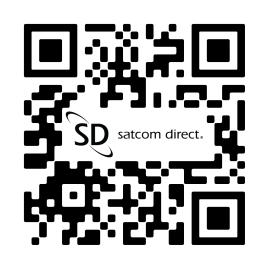
ELITE WINGS MAGAZINE | 15
“
”
Satcom Direct is validating the benefits of Dual Dissimilar hardware installation onboard the company Gulfstream G550.
BOMBARDIER OFFERING WORLDWIDE HIGH-SPEED INTERNET CONNECTIVITY SINCE 2016
By Viswanath Tata
On November 4th, 2016, Bombardier’s flagship jet, the Global 7500 successfully completed its first flight, opening a new era of Ultra-Long-Range flights. Another key industry breakthrough was achieved a few days before by Bombardier when the first Global aircraft equipped with Ka-band High-speed Internet connectivity entered service.
Bombardier’s Ka-band system, powered by Honeywell JetWaveTM Satcom hardware was the first aircraft manufacturer’s line-fit and retrofit offering to take full advantage of Inmarsat’s global Jet ConneX (JX) broadband solution.

| ELITE WINGS MAGAZINE
Business jet passengers have always expected to be connected, productive, and entertained anywhere they fly.

In 2008, Bombardier introduced Inmarsat’s SwiftBroadBand (SBB) cabin and cockpit connectivity solution. With speeds of up to 432 kbps, SBB was perfect for consulting emails and basic web browsing. This service also included separate telephone channels allowing owners to make phone calls directly from the aircraft.
In 2016, with the subsequent growth in satellite networks, Bombardier was able to introduce Inmarsat’s Ka-band highspeed connectivity solution (up to 20 Mbps) on the Global 5000 and Global 6000 platforms. Bombardier became the first business jet manufacturer to offer Inmarsat’s Ka-band after the company was awarded an installation Supplemental Type Certificate (STC) from Transport Canada in March 2016. In 2017, Bombardier extended its Ka-band solution to the Challenger 650 aircraft becoming the first manufacturer to offer the worldwide broadband connectivity solution in the Large jet segment, Medium category. The Ka-band technology was also available as a retrofit through the Bombardier service network for hundreds of in-service Challenger 600 series jets.
The Ka-Band offering was further extended to the supermidsize Challenger 300 and 350 in 2021, with the certification of Viasat Ka-band In-flight connectivity solution.
ELITE WINGS MAGAZINE | 17
EWM: Can you give us an overview of Bombardier’s current Factory-installed In-Flight connectivity offering?
Bombardier currently offers a breadth of cabin connectivity solutions available for installation before aircraft delivery. The Global 7500, the flagship of the industry, is delivered with global Inmarsat Ka-band highspeed cabin connectivity, bringing up to 20 Mbps of data to the aircraft. For the Global 5500 and 6500 platforms, Inmarsat SwiftBroadBand is a Standard feature, while Inmarsat Ka-band high-speed connectivity is offered as an option.
On the Challenger 650, Bombardier offers global Inmarsat Ka-band high-speed and Inmarsat SwiftBroadBand lowspeed as well as regional Gogo ATG 4G connectivity solutions as production-fit optional features.
The Challenger 3500 options offering includes ViaSat Kaband high speed and Gogo ATG 4G. By offering several concurrent connectivity solutions on each platform, Bombardier customers can also choose two independent systems unlocking redundancy for increased availability. Bombardier recognized the growing demand for constant availability of connectivity on business aircraft. As such, Bombardier is continuously working to provide solutions that will exceed its clients’ expectations and is working on connectivity services for Challenger 3500 aircraft – stay tuned.
Bombardier business jets are known to feature some of the smartest cabins in the industry. Can you tell us some aspects of the connectivity system integration with the cabin systems?
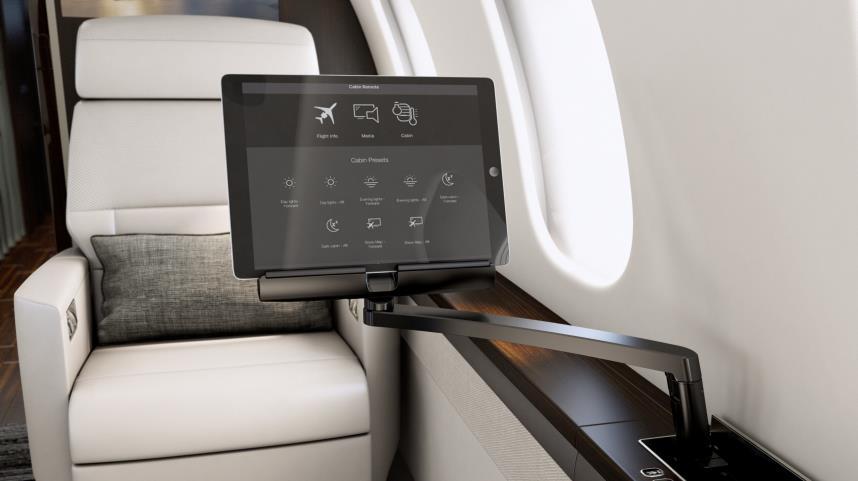


Bombardier’s state-of-the-art cabins feature wireless connectivity, a multitude of HDMI ports throughout the cabin, and a large selection of high-speed connectivity solutions; customers can easily stream content through their smart devices, using the cabin’s wi-fi to enjoy homelike entertainment. Cabin Management System (CMS) integration allows the customer to control their Connectivity Systems settings directly through the CMS app and, through Bombardier’s cabin call app, to make and receive calls directly on their own mobile phones.
In a world where we’ve never been so connected, cabin connectivity is becoming a critical part of the traveler experience, how do you ensure the availability and ontime support of these complex systems?
All Bombardier products are covered by warranty and 24/7 Customer Support. Furthermore, in 2021, Bombardier selected Collins Aerospace as a Preferred Service Provider (PSP) for cockpit and cabin connectivity services, providing a streamlined customer experience from sign-up to training, operations, and troubleshooting. Collins Aerospace brings decades of experience offering cockpit and cabin connectivity services and provides a wide array of competitive service packages across several of our platforms i.e., SBB, Ka-band, and Ku-band, with the exception of ATG. Through this partnership, Collins Aerospace representatives are now co-located at our Laurent Beaudoin Completion Centre, Customer Response Centre, and at our service facilities to ensure customers get assistance with their connectivity needs quickly and efficiently.
Mischa Loeffler, Manager, Product Sustainability & Strategy, Bombardier, answers EWM questions on the company factory installed offering.
Can you give us an overview of Bombardier’s in-service connectivity retrofit offering?
Bombardier is constantly adding improved products and services that allow in-service aircraft to evolve to meet future requirements, such as adding further enhanced situational awareness features and improved connectivity solutions for optimized cockpit safety or cabin connectivity. These solutions are available through Service Bulletins (SB) that extend the in-production development to in-service aircraft. The aftermarket offering is also further extended with Bombardier STCs and 3rd party developed STCs.
How can customers plan their connectivity systems installation or upgrade?
Each owner/operator has an assigned Regional Sales Manager (RSM) that will provide, when requested, a turnkey solution regarding upgrades applicable to different Bombardier platforms. The RSM and their team will provide the best solution at the most competitive pricing taking into consideration customers’ needs and their aircraft-specific configuration.
A connectivity installation or upgrade is a scheduled event and must be planned accordingly with the RSM to ensure a seamless installation experience. Many customers will combine this installation with their upcoming major inspection, but it can also be performed as a standalone upgrade.
As more customers opt to upgrade their aircraft cabin connectivity systems, we often recommend they make the most of their downtime by making other additional upgrades such as installing the free-of-charge Smart Link Plus box currently on offer at Bombardier service centers worldwide. The Smart Link Plus service, Bombardier’s health management program, when connected to the internet, provides aircraft operators with valuable insights that can be used to save time and money.
Worldwide parts shortages, especially for connectivity hardware, have been a big issue facing business jets operators wanting to upgrade their systems, how does Bombardier address that?
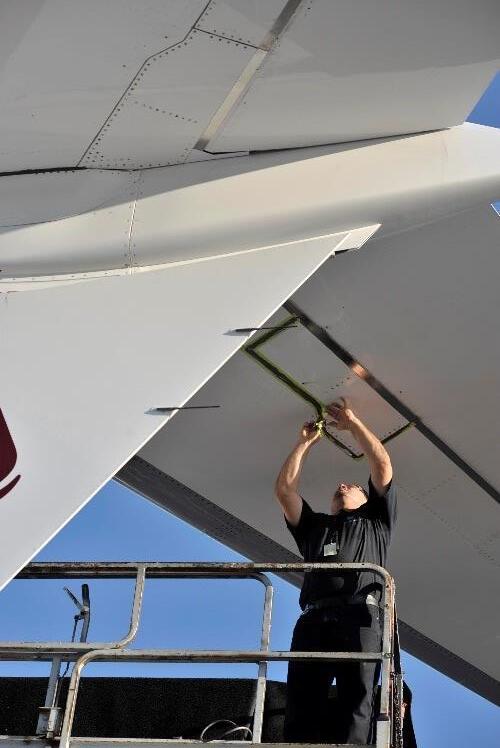
Parts shortages are a challenge that is not unique to Bombardier but affects the whole aerospace industry. Vendor supply challenges are driven by both labor and piece part shortages; labor being the main driver. In cases where there are shortages, customers tend to order extra parts to mitigate risk. Bombardier has been able to mitigate many supplier issues by making the decision in early 2021 to increase its inventory. This was followed by a second increase in 2022. We also implemented a supplier intervention team that sent Bombardier specialists on-site to our vendors.

ELITE WINGS MAGAZINE | 19
.
Elza Brunelle-Yeung, Senior Director, Strategic Planning and Business Development, Bombardier, answers EWM questions on the company retrofit and after-market services offering.
Bombardier is at the forefront of the “Connectivity enabled” digital transformation of the industry. Can you walk us through the recently introduced Smart Link Plus connected aircraft program?
The Smart Link Plus program, Bombardier’s health management program, has infinite benefits for Bombardier customers. With Smart Link Plus, customers will have the unique ability to make real-time data-driven decisions in-flight to effectively dispatch, troubleshoot and track their aircraft service needs, enabling them to make detailed maintenance decisions quickly and effectively. The Smart Link Plus box is an advanced Health Monitoring Unit that generates crucial aircraft data enabling flight and maintenance crews to quickly and efficiently prioritize and proactively troubleshoot essential fault notifications on aircraft with in-flight alerts, increasing an aircraft’s operational efficiency.
The Smart Link Plus connected aircraft program, including the Smart Link Plus box, was first introduced on the Bombardier flagship Global 7500 aircraft and customers continue to benefit from its advanced data-driven capabilities. Now, close to 100% of current Global 7500 aircraft customers have enrolled in Smart Link Plus services, and Bombardier has begun to retrofit in-service Challenger and Global aircraft.
With Smart Link Plus, ground crews can use the myMaintenance application to independently monitor an aircraft while in-flight anywhere in the world, from their personal device, and assist in finding the root cause of a fault notification. This can be done without having to distract the flight crew. While in-flight, the Smart Link Plus service automatically sends takeoff, landing and in-flight fault notifications together with contextual data. Full flight data is automatically transmitted and accessible once the aircraft has landed. Access to full aircraft systems data provides additional information required to troubleshoot more complex faults.
Additionally, with the customer’s permission, Bombardier’s 24/7 Customer Response Centre (CRC) and dedicated team of experts and specialists can support troubleshooting efforts using Bombardier’s

myMaintenance data visualization tool and organize additional support as required.
Achieving the full benefits of the Smart Link Plus program can be done in three easy steps: customers must first ensure the Smart Link Plus Box is installed; then the customer must sign into the Bombardier myMaintenance app to enable data consultation from their own device. Finally, the full benefit of the connected aircraft program requires that aircraft be equipped with a SATCOM or ATG cabin internet system to enable in-flight functionalities. Customers are required to subscribe to an annual connected aircraft service package.
As more customers opt to upgrade their aircraft cabin connectivity systems, we often recommend they make the most of their downtime by making other additional upgrades such as installing the free-of-charge
Smart Link Plus box currently on offer at Bombardier service centers worldwide.
20 | ELITE WINGS MAGAZINE
”
“

In-Flight Connectivity Performance it’s all about capacity

 By James Person, Sr. Director, Global Business Development for Business and VVIP Aviation, Viasat
By James Person, Sr. Director, Global Business Development for Business and VVIP Aviation, Viasat
Today’s business jet is considered an office in the sky. Whether the business jet traveler is flying to a neighboring state, or another continent, he or she wants the flight time to be productive, making an internet connection essential. At the same time, many travelers want the same streaming video entertainment they enjoy at home, especially on long trips. Both work and entertainment applications require capacity. While many operators ask us about speed and latency, capacity is what ultimately enables high speeds, limits congestion (which is the key cause of latency), and is responsible for delivering consistent, high quality Wi-Fi performance from gate to gate. In-flight connectivity is a lot to take in, we know. But don’t worry, we’ll explain!
Capacity defined
In-flight connectivity to the internet relies on satellites through which packets of data, or data bits, are transmitted. Everything done online, from email to video conferences to streaming video, is in the form of data bits. Capacity is the maximum number of data bits which the satellite network is able to accommodate and send to all users of the service over a given period of time. A standard figure of merit for this is throughput measured in bits per second. This quantity can be measured as peak instantaneous throughput, as well as average throughput for typical usage of the service. While peak numbers can grab attention, the average typical throughput is what you should keep a close eye on since that more accurately determines the quality of your Wi-Fi experience onboard. The two most important factors in satellite capacity are the available power of the satellites, and the amount of spectrum that is allocated to the satellite network. As described, capacity is the engine behind high-speed internet, and ultimately the measure of the Wi-Fi experience for the passengers aboard the aircraft. Speed is the velocity at which data can be pushed through the network at any given time and represents the quantity of data bits the bandwidth can accommodate.
One could think of capacity as analogous to the number of lanes on an urban highway or interstate autobahn. The more lanes, the more vehicles can be accommodated. The number of lanes may be adequate to allow smooth traffic flow—at least at times of the day when it is relatively light. But during heavy traffic periods, such as the morning or evening commute hours, the volume of cars coming onto the road constrains total lane capacity, cutting vehicular speed to a crawl or standstill.
Capacity density
Capacity density measures and differentiates not only speed to a single user, but how many users in a geographic area receive a consistent, high-speed, in-flight connectivity experience.

Bandwidth is a major factor in determining capacity. As with a build-up of motor vehicles taxing the capacity of highway lanes, heavy usage can also impact internet speed, significantly slowing the transmission of data bits. The more users on a network without sufficient capacity, the more the service degrades, which is why capacity is so important. If the capacity is substantially large, more data bits can flow through the satellite network, even during high internet traffic periods, resulting in a faster, higher quality connectivity experience per individual user.
So, when multiple users are involved, a critical point with capacity is how much data it can hold and the maximum speed at which that data can be exchanged. The challenge, then, is providing greater capacity, and at the same time, more speed when and where the need demands it.
Over the past few years, this has become a critical issue for the corporate and private aviation community, especially for internationally traveling passengers who heavily rely on data-intensive applications such as streaming video and teleconferencing, or wanting to enjoy live coverage of major sporting events. Yet surprisingly, many Wi-Fi equipped business and private aircraft today have only the most basic connectivity and are not linked to a broadband or high-capacity transmission service. This is a key differentiator for Viasat – we have invested heavily in high-capacity satellites that are in service now with much more on the way.
Consequently, many business aircraft lack the capability to handle the data-intensive, high speed internet connectivity requirements of multiple passengers all of whom may be simultaneously trying to browse the web, engage in video conferencing, or simply to text and email. For a busy executive on a long flight, that could prove to be costly in terms of lost work time.
ELITE WINGS MAGAZINE | 23
Capacity flexibility
Adding to the need for broadband in-flight connectivity is the fact that hundreds or more aircraft are in the air or on the ground at or away from base on a 24 hour, seven day per week basis. These aircraft can be distributed over many geographical regions around the world. This means that, along with increasing capacity and speed of data exchange, an effective satellite network needs to incorporate the flexibility to focus the capacity where and when it is needed, regardless of the number of users, or
daily fluctuations in the number of aircraft in flight. Older satellites are static and have limited capability to put capacity where it is needed. However, newer satellites, and especially Viasat’s next-generation ViaSat-3 constellation, are designed with the flexibility to meet increased demand when and where it happens, such as a major sporting event, or an airport hub with heavy air traffic.

To illustrate, if multiple business jets were to take off from London-Luton Airport, the signal of the satellite providing a high-capacity Wi-Fi service would be focused there. Then, as the airplanes move westward across the Atlantic, and finally, to their destination at Teterboro, New Jersey or White Plains, New York, as examples, the satellite’s signal would not only continue to reach each aircraft, but would afford the same power and capacity as it did at the time the aircraft left the ground. A highcapacity satellite system, in other words, would deliver the same quality internet experience to each passenger, on all of the aircraft, whatever the origin, destination, and the number of passengers using the system for multiple purposes at any time throughout the flight.
When there are multiple users of an in-flight connectivity service provided to aircraft operators, it is also essential to take into account the variability of aircraft operations, which simply means that at certain times of the day, there will be numerous aircraft in flight, while at other hours, few will be flying Because there is not even distribution of users throughout the day, enough capacity must be delivered to cover all the fluctuations of private air traffic Unlike many other providers, Viasat has more than a decade of experience optimizing its network to support in-flight customers so that capacity can be directed where it is most needed geographically and during times of peak demand
24 | ELITE WINGS MAGAZINE
ELITE WINGS MAGAZINE
Capacity that can meet tomorrow’s demand
While owners of private jets justifiably have many questions regarding the cost of connectivity systems and downtime of the aircraft for installation, capacity, flexibility and consistency are the most important aspects of a high-quality internet experience in flight. Latency remains a hot topic. We’ll reiterate that capacity is what ultimately enables high speeds, limits congestion (which is the primary cause of latency), and is responsible for delivering consistent, high quality Wi-Fi performance.

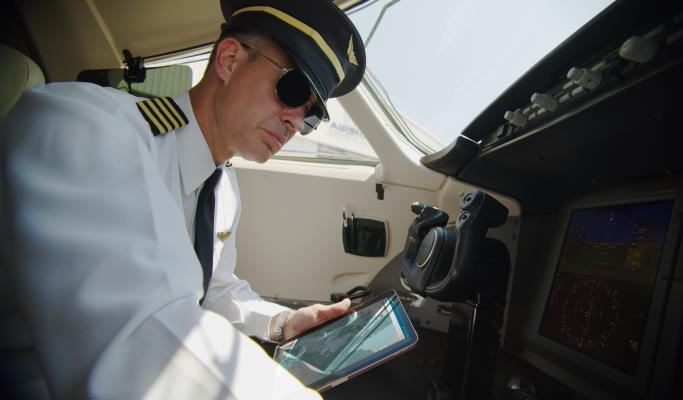
Just as important is that the network should be designed to accommodate projected future customer requirements, and exponential growth in data usage demand. What will remain a given with inflight connectivity is one basic premise: the more capacity in the network, the more bandwidth for each user, and the better and faster the internet experience will be. The technology of tomorrow will need to support the growing demand for connectivity.
To address expanding requirements for ever wider capacity, Viasat is readying to launch the first of a trio of satellites that make up next generation Ka-band satellite constellation, ViaSat-3. The ViaSat-3 constellation is expected to boost Viasat’s total capacity by approximately 600%. In fact, each satellite is anticipated to deliver at least 1 Terabit of data per second (1Tbps) equal to 1,000 Gigabits per second making them the highestcapacity broadband satellites ever launched.

ELITE WINGS MAGAZINE | 25
In business aviation, sufficient capacity – even during peak times of demand - is what provides fast, consistent performance at scale that allows passengers and crew to stream, video conference, connect to VPN, or anything else they might need to do online in flight.
By Abdelmajid Jlioui
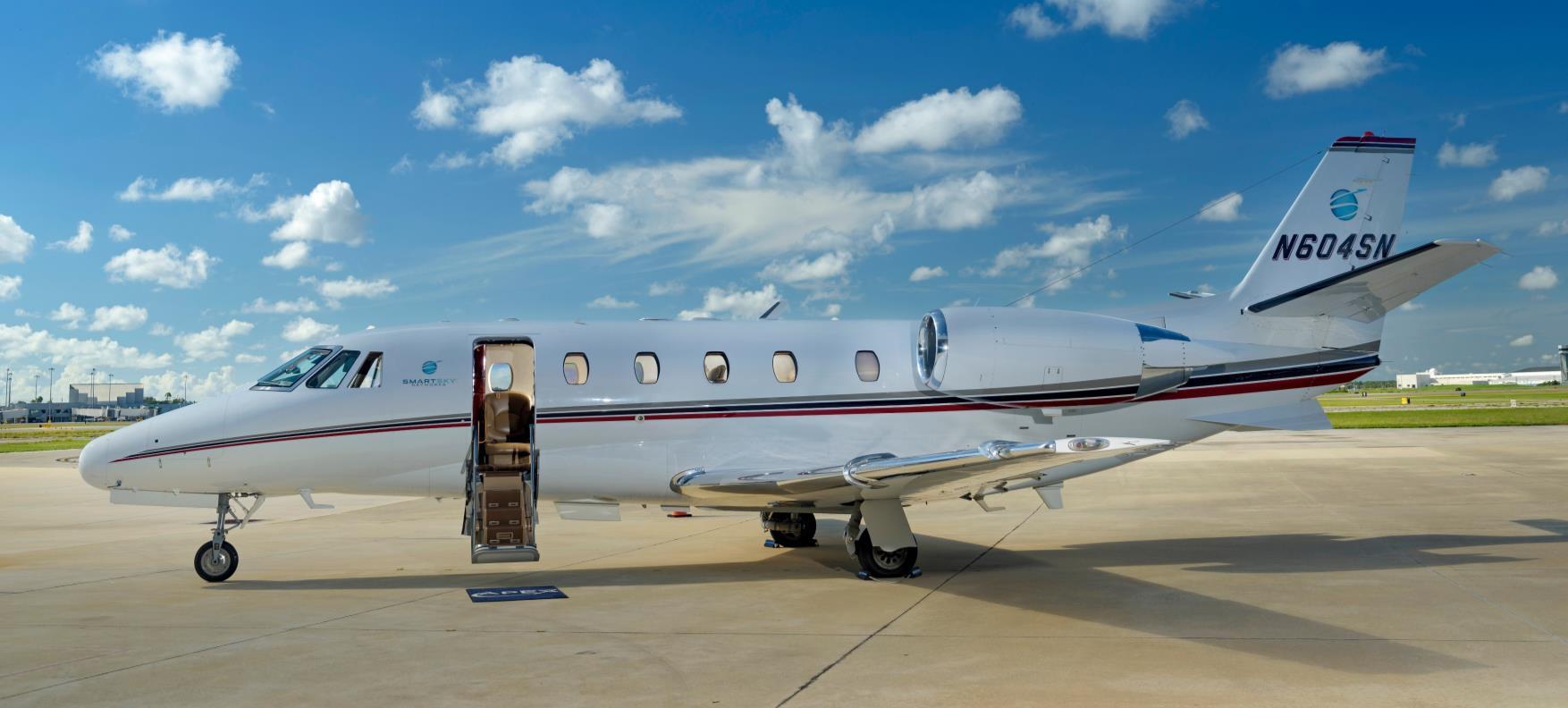

A Service-Ready, Cost-Effective, High-Speed
Next-Generation
Now
Continental
Connectivity Solution SmartSky’s
ATG Network
Available for the
US Fleet
Last year, SmartSky Networks announced the availability of nationwide coverage by its next-generation ATG network, how does this new offering differs from the legacy ATG systems many US-based aircraft are using today?
The SmartSky difference is night and day. It is similar to the stark contrast between an old Blackberry device and a far more powerful Smartphone.
The legacy ATG offering most aircraft are still using is built on 3G technologies nearly two decades old. This means that the connection is very slow, uses components banned by the US government due to cybersecurity risks, and doesn’t enable people to easily use the same applications they rely upon while on the ground.
The level of internet service available inflight has been miserable for decades. It is barely tolerable for even 1 or 2 users at a time, but only so long as those two people have very light data needs. Many times streaming is difficult or not even allowed. It is only slightly better than not having any service at all.
By comparison, SmartSky’s patented ATG network uses a combination of advanced 5G and LTE technologies to deliver a connection that is fast, reliable, and secure. Multiple passengers can simultaneously use the same applications they do on the ground on multiple devices at once. This includes data-intensive video conferencing, social media applications, VPN connections, cloud applications, e-mails with large attachments, and more. The SmartSky network is designed around the concept of symmetrical bandwidth for both sending and receiving data, and low latency, so that you can have fast downloads and uploads in real-time. Being able to send data to and from the aircraft at the same rate is key to the functionality of today’s applications that require two-way data flow to function properly.
Importantly, SmartSky’s new technologies also give customers significant advantages over legacy equipment, beyond just the connectivity experience in the air today. SmartSky’s patented “beamforming” technology does not require sharing of bandwidth as legacy systems do. When more users access the network at the same time, the performance other users across the network experience is maintained. That’s not true with other networks that share capacity.
Further, the use of software defined networks and software defined radios allows the systems to be remotely upgraded, rather than requiring expensive and
time consuming hardware changes. This enables customers to continually benefit from technology advancements and dramatically extends the longevity of an investment.
Ultimately, the best things about SmartSky’s new network are that it is available now and it doesn’t have to break the bank and customers are raving about its performance. The hardware installation is more cost effective than a legacy install while available service plans offer many multiples of the data for comparable prices, including an unlimited plan.
Since NBAA-BACE 2022, SSN has been very busy demonstrating its new network capabilities to prospective customers and MRO centers all over the US. What are the most noteworthy feedbacks received during these flights?
Internet connectivity is the number one upgrade that customers are asking for. So, there is enormous demand for a system that actually works.
In business aviation the issue of uninterrupted productivity is particularly important. Most passengers on a business jet expect the best of all things. Inflight connectivity is no exception. Yet, a high-quality, premium inflight experience has been frustratingly elusive, nearly 2 decades behind our current ground based experience. Passengers are so accustomed to lowering their expectations when the aircraft takes off, it’s no surprise that when we take customers on demo flights and they see for themselves that everyone on the plane can be doing all of the same things they do on the ground with no hassles, the response is remarkable. They wonder why has it taken this long for it to happen.
For instance, we recently took a customer on a flight through the New York metropolitan area, which is the busiest and noisiest area of the country in terms of radio signals. We put the system to the test, using multiple devices per person simultaneously, and intentionally working with applications that require high bandwidth. Still, on that flight our customers experienced a stable, uninterrupted internet connection the entire time. The big smiles we saw really told the story.
From a more objective standpoint, instead of measuring performance in Megabytes per hour, with SmartSky they can easily use Gigabytes per hour of data if needed, affordably. Now, when those customers look to provision an aircraft SmartSky is an obvious choice.
ELITE WINGS MAGAZINE | 27
Ryan Stone, President, SmartSky Networks, LLC answers EWM questions on the company next generation ATG network offering.
ATG network-based connectivity appeals to a large number of business aircraft models, how are you ramping up installation STCs and MRO slots to address the large aircraft diversity in this market?

We are working with our existing dealers and adding new ones to handle the demand. This includes the initial STCs we already have for models covering over 5,500 tails today, and the projects in the works or starting soon are significant, including a commitment from Textron Aviation for STCs on more than a dozen of their aircraft models. We expect to have over ten thousand more tails addressed by an STC in the coming few quarters, meaning that whatever model of business aircraft a customer flies, it’s likely we either already have them STC-ready or will very soon. And we welcome interested operators wanting to provide a first article aircraft to inquire to see if we have an STC opportunity available for them.

”
“
| ELITE WINGS MAGAZINE
Ultimately, the best things about SmartSky’s new network are that it is available now and it doesn’t have to break the bank and customers are raving about its performance. The hardware installation is more cost effective than a legacy install while available service plans offer many multiples of the data for comparable prices, including an unlimited plan.
Since its launch, SSN has had a vision of not only bringing an innovative ATG network but also how this network can enable a new wave for aviation’s digital transformation. Can you walk us through this vision and how it will enable operators to transform their aviation business and customer experience?
With great connectivity comes the ability to truly change the aviation experience, no differently than it transformed the way we use the internet on the ground. But, while most of the attention in aviation is focused on what happens in the cabin, what is also really exciting is how a true broadband capability can change the experience in the cockpit as well as the effect it can have for flight operations overall. Better connectivity can improve safety, efficiency, and reduce cost, all while enabling new applications yet to be conceived. Our philosophy has been to not only provide connectivity between the aircraft and the ground, but to create a platform that makes it possible to connect various data sources in one ecosystem. SmartSky’s “Skytelligence” solution is designed to catalyze the development and distribution of new aviation-related applications and services, regardless of which communications network is used. Skytelligence lowers the cost for app developers to access common aviation data feeds and it allows them to utilize existing and develop new Application Programming Interfaces (API) in order to enable new tools and capabilities. The harnessing of this Big Data from various aviation sources has resulted in a new market category known as Aviation Data as a Service, or ADaaS.
As more aircraft are equipped with more robust, two-way connectivity like SmartSky, the possibilities expand even further. SmartSky users reap increasing benefits as they access more sophisticated aviation-related digital tools and services and we can anticipate that new ones will be added all the time, representing more growth in ADaaS.. As an example, we’ve worked with the International Air Transport Association (IATA) to bring crowd-sourced turbulence data to business aviation in an application called SmoothSky. So, hopefully, the days of reading about turbulence-related injuries can be over. With the right tools operators can avoid turbulence in ways similar to how we avoid traffic on the ground today, just by looking at a live map and seeing ‘red’ where we shouldn’t go, along with suggestions for where we can proceed safely.
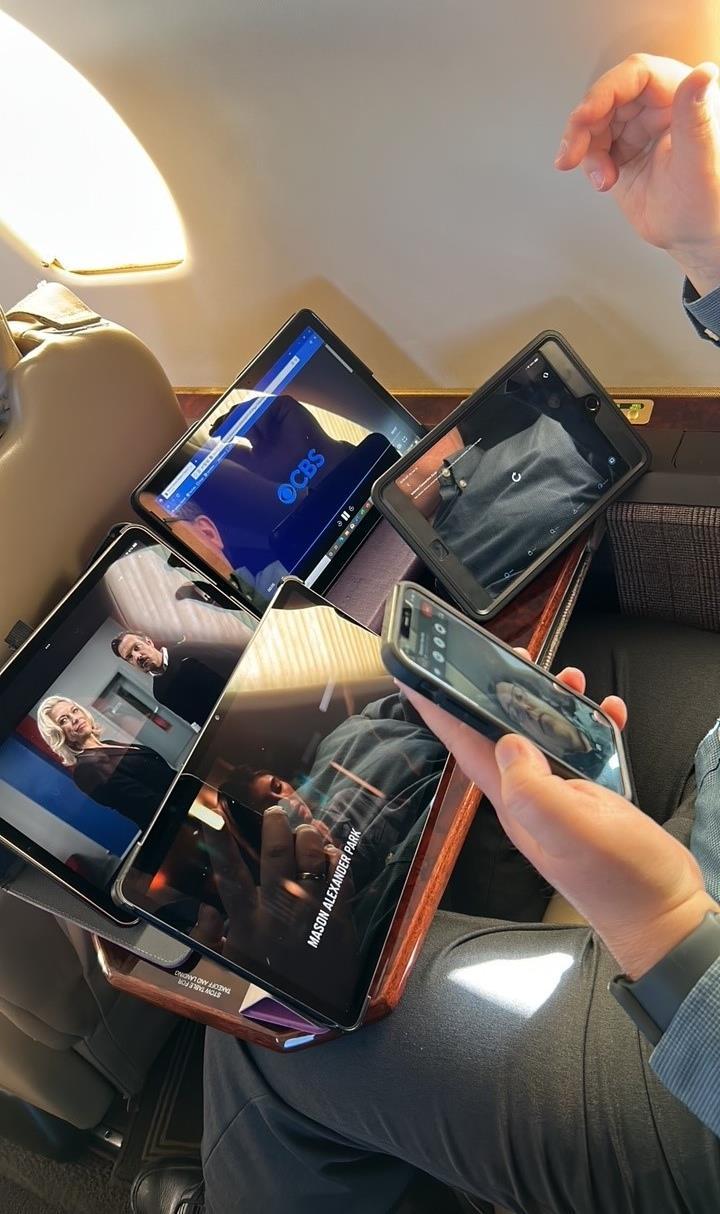
But that’s just today. We’re also working on a NASA project with GE Aviation and Mosaic ATM to enable a
cloud-based Flight Management System of the future. This system will make airspace management far more robust, especially when coupled with advancements like 5-dimensional Trajectory Based Operations that the SmartSky system supports. In the coming era of Advanced Air Mobility and new drone technology, we need to rethink how we operate aircraft, crewed or not.
The benefits of a reliable, secure broadband network extend beyond safety to sustainability as well. By using real-time data and flight information, operators can fly optimal flight paths. This not only saves fuel, it also reduces aviation’s carbon footprint. All of this takes digital horsepower, the kind that SmartSky is bringing to the table with both our ATG network and Skytelligence
ELITE WINGS MAGAZINE | 29
SmartSky’s Next-Generation ATG Network
Real world connectivity testing during SmartSky’s demo flights
By Abdelmajid Jlioui
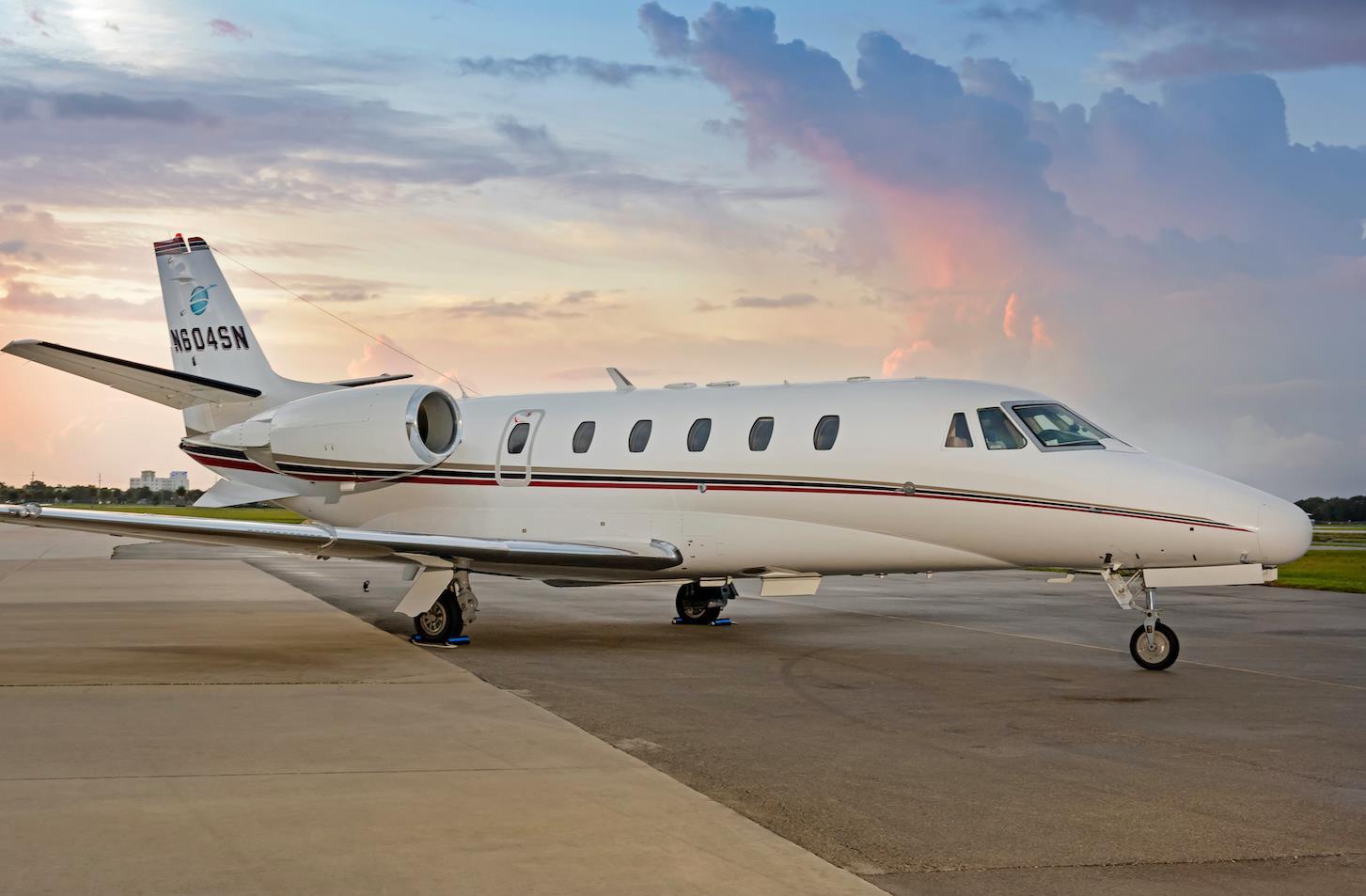
30 | ELITE WINGS MAGAZINE Operator BIZAV Offering Coverage Service Launch Service Providers GOGO GOGO BIZ Continental US + Canada 2008 GOGO GOGO BIZ 4G 2016 GOGO 5G Continental US 2023 SMARTSKY NETWORKS SmartSky LITE Continental US 2022 HONEYWELL FORGE SmartSky Flagship AVIONICA Picture © Smartsky Networks ATG NETWORKS OFFERING GUIDE
Gogo BIZ 4G
HARDWARE
Gogo offers two systems configurations to access its ATG Network. The compact AVANCE L3 is designed for turboprop and light jets. The system is based on a single 3MCU LRU and two fuselage-mounted omnidirectional antennas.
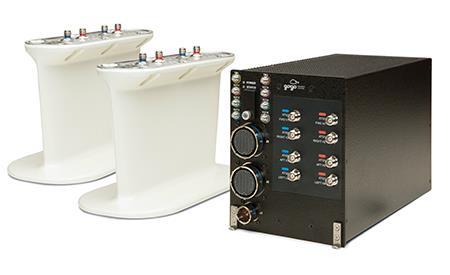
The AVANCE L5 is designed to connect to Gogo Biz 4G ATG network. the system is based on a single 5MCU LRU and two dual directional fuselage-mounted antennas. The AVANCE L5 also offers a terrestrial modem allowing for Complimentary internet on the ground in 100+ countries and Gogo Vision, a wireless in-flight entertainment system offering inflight maps and access to movies, magazines, and TV programs.
Gogo Business Aviation was launched in 1991 as Aircel, offering analog-based voice communication on private aircraft flying over the continental USA. In 2006, Gogo won a 3 Mhz Federal Communication Commission (FCC) frequency license auction to operate an air-to-ground network over the US. Using this frequency license Gogo was able to offer internet connectivity to all major US airlines and develop the most competitive connectivity offering for business aviation. The Gogo Biz Network offers a 3G Wi-Fi and voice calling service using the light AVANCE L3 system compatible with the majority of turboprop and light jets. The Gogo Biz 4G Network uses Gogo ATG-4 system, a backward-compatible improvement to the previous ATG system allowing an increase in the downlink speed from 3.1 Mbps to 9.8 Mbps. The improvement is achieved through advanced wireless communications protocols maximizing the network throughput capability.

COVERAGE
Gogo has more than 250 cellular towers covering the continental U.S, portions of Canada, and Alaska. The stations are connected to two data centers for redundancy.


SERVICE PROVIDERS
AIRCRAFT OFFERING
ELITE WINGS MAGAZINE | 31
Service Launch Coverage Speed Plan Cost Hardware Weight 2016 Continental USA + Canada 10 Mbps $1,9K - $4,6K 22 Lbs TURBOPROPS JETS BIZLINERS Light Medium Large
HARDWARE
SmartSky ATG Flagship and LITE
The SmartSky Flagship system includes the following components:
▪ Aircraft Base Radio (ABR) LRU
▪ High-Performance Blade Rx Antenna (HPB)
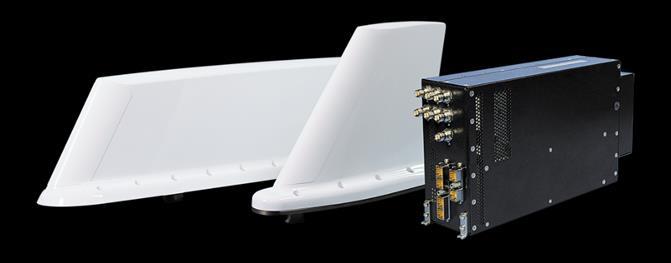
▪ Full-Duplex Quad (FDQ) Rx/Tx Antenna
The SmartSky LITE system includes the following components:
▪ Aircraft Base Radio (ABR) LRU
▪ Full-Duplex Quad (FDQ) Rx/Tx Antenna

Both can interface through a 1Gbps ethernet to cabin routers and wireless access points. The systems are compatible with any SmartSky validated router. SmartSky software defined network and software defined radios have been engineered from the ground up with patented technologies to ensure the integration of the latest available technology advancements and the best possible performance as they become available. SmartSky LITE is the only streaming-capable system for small aircraft with a shipset weight under 19 lbs.
Formed in 2011 by senior telecommunications and aviation executives, SmartSky Networks is transforming aviation through disruptive communications technologies and advanced tools to make connected aircraft a reality. In July 2022


SmartSky announced full continental US coverage. Its next generation Air-to-Ground network is built on the latest technologies, enabling software-defined upgrades and harnessing the power the best available capabilities for the current “G” (Generation) with enhanced 5G and LTE technologies patented by SmartSky and offered exclusively to SmartSky customers. Using 60Mhz of radio spectrum in the unlicensed 2.4Ghz band, SmartSky offers unprecedented inflight broadband speeds and bandwidth without interference in high traffic areas. This enables all the functionality you expect on the ground and need in the air, including cloud applications, business productivity applications, aircraft performance data and situational awareness tools in addition to text, voice, and video calls, live streaming, and large file transfer.

COVERAGE
SERVICE PROVIDERS
AIRCRAFT OFFERING
32 | ELITE WINGS MAGAZINE
Service Launch Coverage Speed Plan Cost Hardware Weight 2022 Continental US (CONUS) >20 Mbps bi-directional $995 - $9,995 19 to 32 Lbs
TURBOPROPS JETS BIZLINERS Light Medium Large
HARDWARE
Gogo 5G
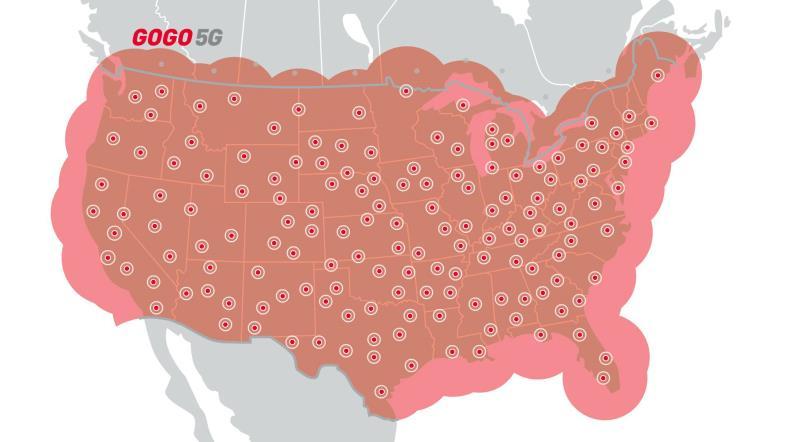
Since the sale of its commercial aviation connectivity division to Intelsat in 2020, Gogo is focused on building the world’s first 5G network exclusively dedicated to business aviation usage. The Gogo 5G solution will adopt the same 5G technology that is currently being deployed by other ground operators. The ability to augment 5G with their existing licensed spectrum network, gives Gogo a distinct competitive advantage. The network will rely on the unlicensed spectrum at 2.4GHz (Mainly used for non-urban areas usage) and its licensed spectrum at 3G/4G 850MHz (Mainly used for urban areas usage).

The GOGO 5G network will benefit from a large number of technologies developed by a network of carefully selected strategic partners. Core 5G ATG network components will be provided by connectivity solutions leader CISCO. Airspan will provide its carrier-grade Radio Access Network (RAN), Air5G OpenRange. This advanced beamforming and tracking technology is a key enabler to connect high-speed jets to the ground network without performance degradation.
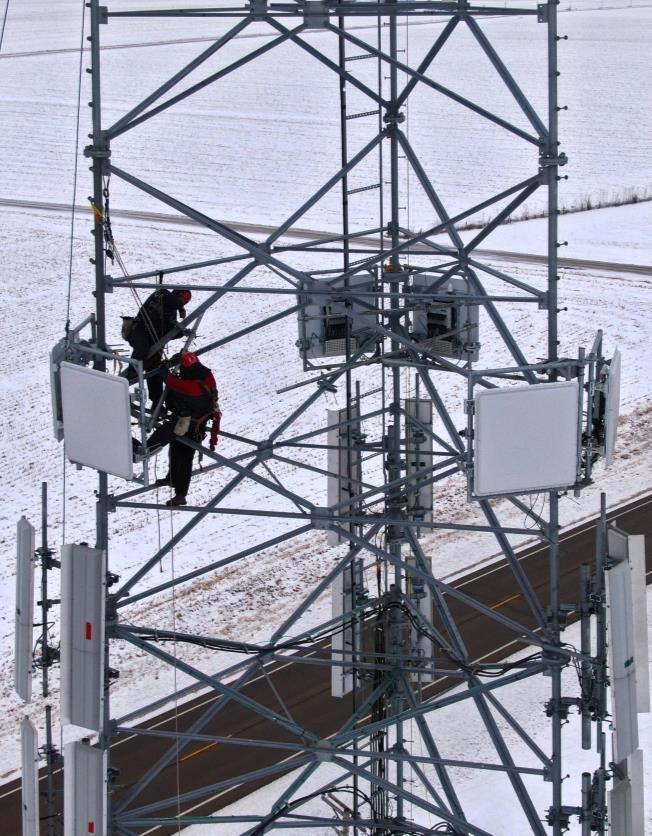
COVERAGE
Gogo 5G airborne hardware will be based on current AVANCE L5 platform system This in-service platform is designed to be easily upgradable to 5G when the 5G will be available through the addition of a single 5G LRU (Gogo X3) and swapping of the L5 antennas to the Gogo MB13 antennas


The two belly-mounted 13-inch blade-style antennas feature advanced multi-band phased array technology from FIRST RF.

SERVICE PROVIDERS
AIRCRAFT OFFERING
ELITE WINGS MAGAZINE | 33
Service Launch Coverage Speed Plan Cost Hardware Weight 2023 Continental US (CONUS) ~25 Mbps TBD TBD
Gogo X3
TURBOPROPS JETS BIZLINERS Light Medium Large
MB-13 Antenna
Gogo offering update
By Viswanath Tata
The world’s largest provider of broadband connectivity services for the business aviation market is growing its portfolio of solutions with both a new ATG 5G network to serve the North American market and a global broadband solution powered by OneWeb LEO constellation.

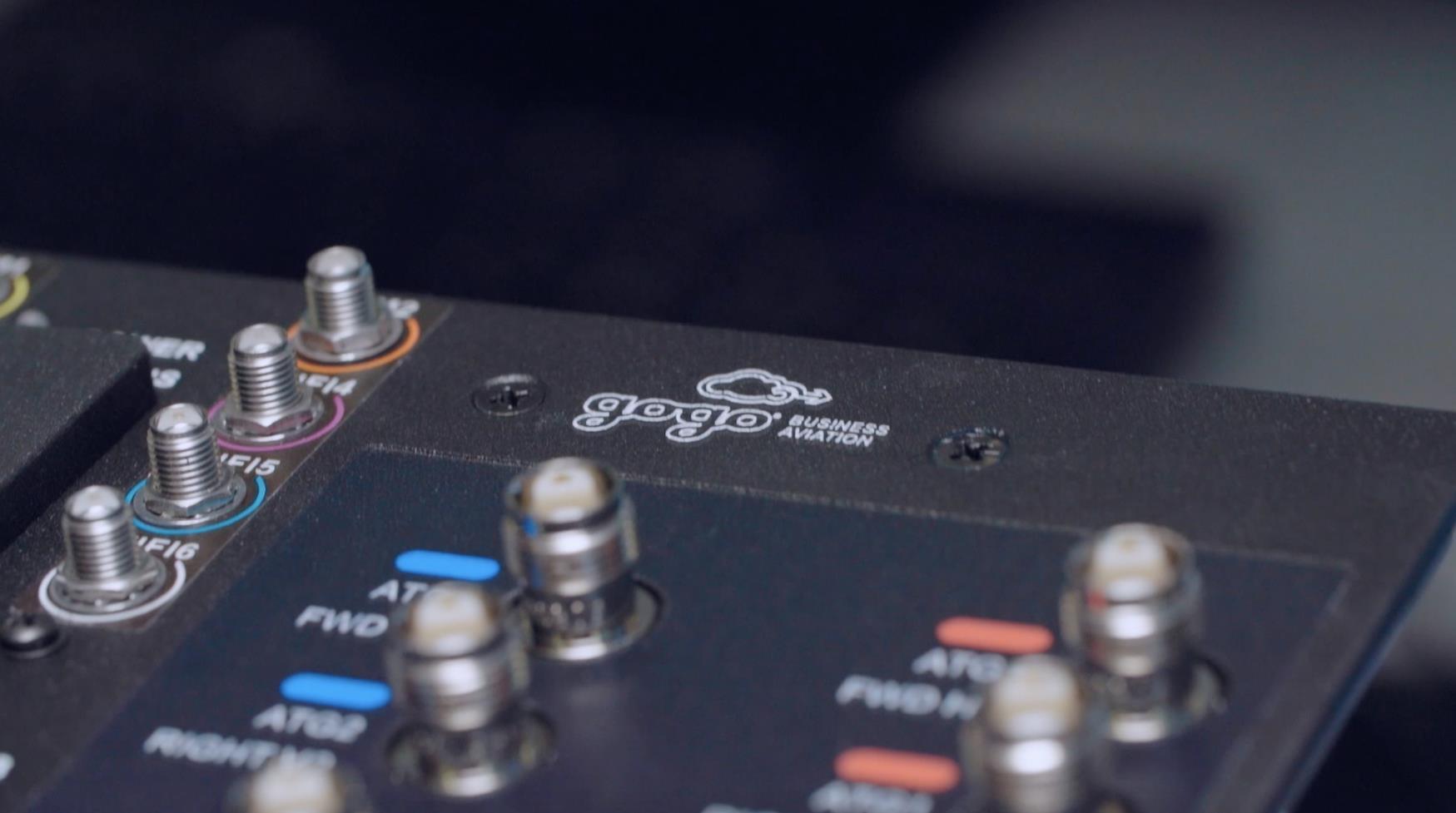
| ELITE WINGS MAGAZINE
In December 2020, Gogo completed the sale of its commercial aviation division to satellites operator Intelsat, turning all its focus to serving the business aviation market. How do you see that single focus making a difference in a market where travelers have very high expectations?
It’s been very beneficial for our customers and for our business. Having a sole focus on business aviation has allowed us to invest more targeted innovations to benefit the business aviation market specifically such as Gogo 5G, which will launch later this year, and our new low-Earthorbit (LEO) global broadband service which will launch in 2024. Our business operations are more streamlined as well which enables us to invest more heavily in new technology that will provide better performance and more services for our customers. In October 2022, Gogo completed its 5G nationwide network, and plans to expand 5G into Canada later this year.
Since its first launch in 2008, Gogo’s air-to-ground (ATG) connectivity network has been the only Satcom alternative solution, enabling broadband connectivity access to thousands of small to medium size jets and even turboprops. What is ATG’s current market size?
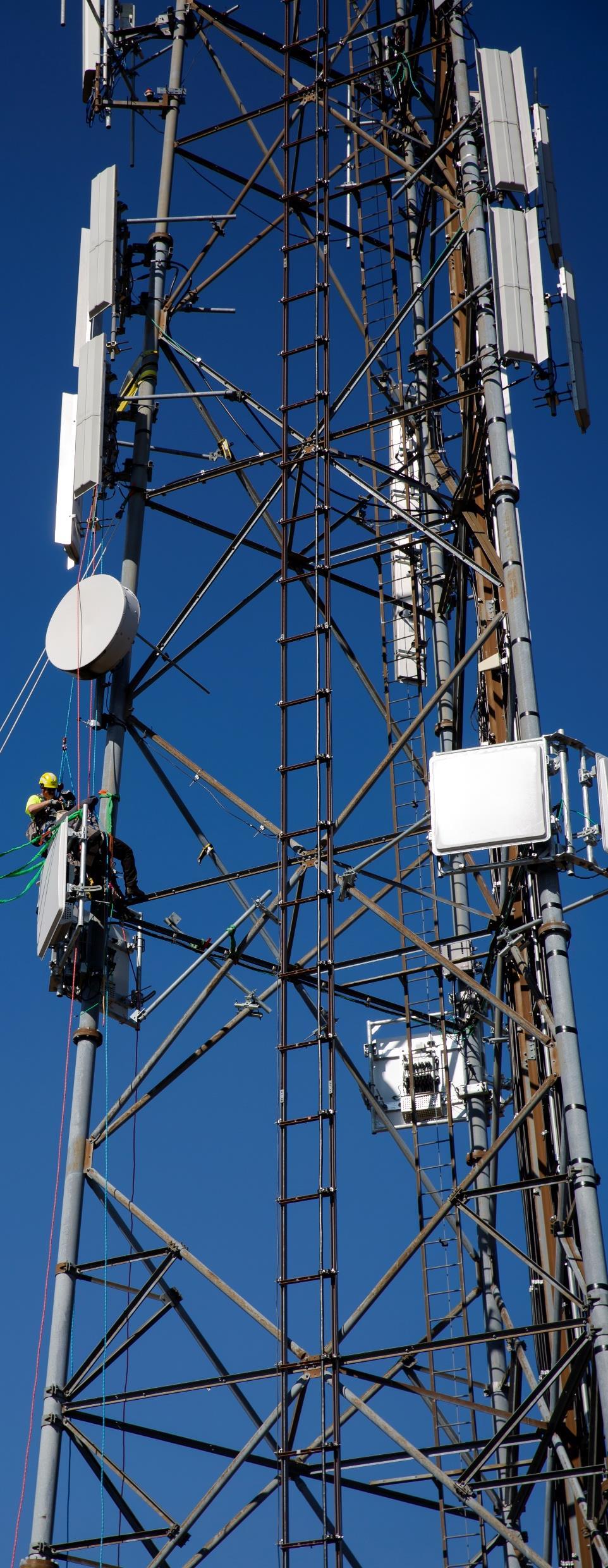
Gogo is the world’s largest provider of broadband connectivity services for the business aviation market. Gogo’s products and services are installed on thousands of business aircraft of all sizes and mission types from turboprops to the largest global jets, and are utilized by the largest fractional ownership operators, charter operators, corporate flight departments and individuals. As of December 31, 2022, we reported 3,279 business aircraft flying with Gogo’s AVANCE L5 or L3 system installed, 6,935 aircraft flying with its ATG systems onboard, and 4,475 aircraft with narrowband satellite connectivity installed.
Gogo is both a connectivity network operator and a service provider. AVANCE platform is a key enabler for delivering a complete in-flight entertainment & connectivity solution for passengers, pilots, and operators. Can you walk us through some of this platform’s capabilities and market adoption?
Gogo’s AVANCE platform, with its multi-bearer capability and software-centric design, allows customers to futureproof their inflight connectivity investments, with easy upgrade paths to both Gogo 5G and Gogo’s global LowEarth Orbit (LEO) satellite-based product in the future. AVANCE is the single digital engine that drives the entire inflight connectivity and entertainment experience.
ELITE WINGS MAGAZINE |
Dave Mellin, Director of corporate communications, Gogo answers EWM questions on the company connectivity product portfolio
Unlike traditional avionics LRUs, which are designed to only do one thing, Gogo AVANCE systems are fully integrated platform solutions that makes it possible to integrate and transform your entire inflight connectivity and entertainment (IFEC) experience. Everything works together and everything is designed to be sustainable, not replaced. AVANCE is a platform, not a single product, that can be upgraded over time with new technology and capabilities as they become available. It also delivers Gogo Vision, Gogo’s entertainment offering with hundreds of movies and TV programs along with flight tracking, more than 30 leading digital magazine titles, and business news clips from Bloomberg. There are nearly 3,300 aircraft flying with an AVANCE L5 or L3 system installed today making it the most successful and widely adopted broadband inflight connectivity system ever launched.

Earlier this year, Gogo announced the successful CDR completion of the 5G chip required for Gogo X3 5G LRU paving the way for the 5G service launch later this year. How are you planning to address thousands of US-based aircraft transitioning to the new service?
Gogo 5G service can install the AVANCE L5 system today with full 5G provisions and operate on Gogo’s 4G network
until the X3 LRU is available. Once the X3 is ready, it can be installed quickly and 5G service can begin immediately, saving downtime and expenses. Gogo is offering significant incentives to anyone who installs the 5G provisional kit with the AVANCE L5. The first-article Supplemental Type Certification (STC) for the 5G bellymounted MB13 antennas and the X3 (5G) LRU have been completed. That STC will be amended once the 5G chip becomes available. Gogo is working closely with each of the business aviation original equipment manufacturers and several authorized Gogo dealers to develop additional STCs that will cover more than 30 aircraft models in the aftermarket or from the factory. Gogo has close relationships with more than 80 dealers in North America who are authorized to install our systems and we’re expanding that number even further.
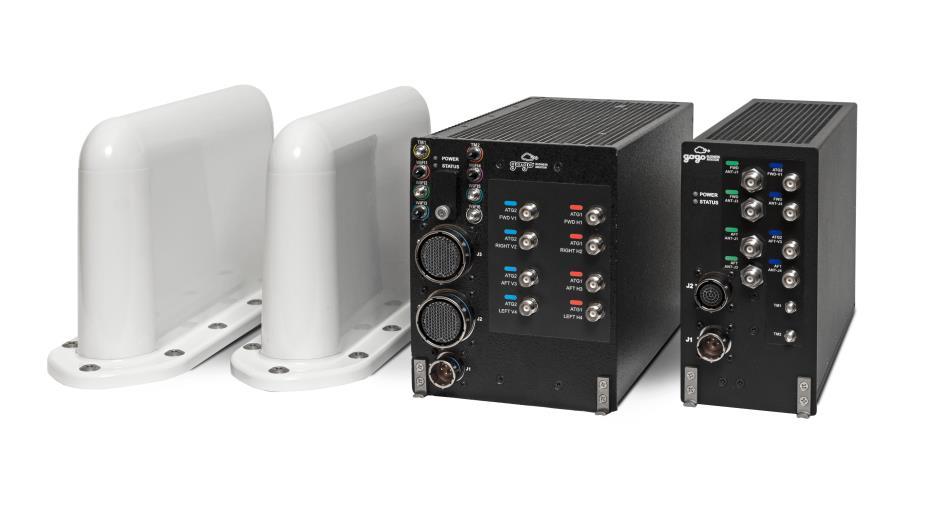
36 | ELITE WINGS MAGAZINE
Last year, Gogo announced the launch of a global broadband connectivity service powered by OneWeb LEO satellites constellation. With this major breakthrough in satellite offering and aircraft antenna technology, the new service can bring broadband connectivity to virtually any business aircraft of any size, what is your expected addressable market size for this game-changing service?

There is a lot of opportunity globally for our global broadband service – especially with its small form factor, light weight and the fact that it requires just one AVANCE LRU and the electronically steered antenna (ESA). Today 70% of North American-based aircraft, and 95% of the business aircraft outside North America have no broadband connectivity – so there’s a significant need and opportunity. Up until we announced our solution, there has been no true broadband offering outside of North America for aircraft that are midsize and smaller, and we specifically designed our service to fit on smaller aircraft to provide service across the business aviation market from large turboprops all the way to ultra-long range global aircraft. There are thousands of aircraft globally that can install our system.
We see ATG 5G and global broadband as complementary elements of our product portfolio, with 5G targeted to serve valueoriented segments of the North American market where 86% of all flights take place, and global broadband targeted to serve all segments outside North America in the high performance super-mid and heavy jet segments inside North America. Our AVANCE multi-bearer capability will allow us to serve the super high premium segment of North American aircraft with LEO and ATG connectivity at the same time, significantly enhancing capacity and providing redundancy for those owners who want them.
ELITE WINGS MAGAZINE | 37
“
”
SATCOM NETWORKS
Satellite networks have seen a large evolution in the last few years with the introduction of record-breaking highcapacity satellites allowing for ground-like connectivity speeds, reduced costs, and highly optimized coverage.
 By Abdelmajid Jlioui
By Abdelmajid Jlioui
| ELITE WINGS MAGAZINE
©
Inmarsat
Satellite networks technology varies by Satellite orbit and Frequency-band usage.
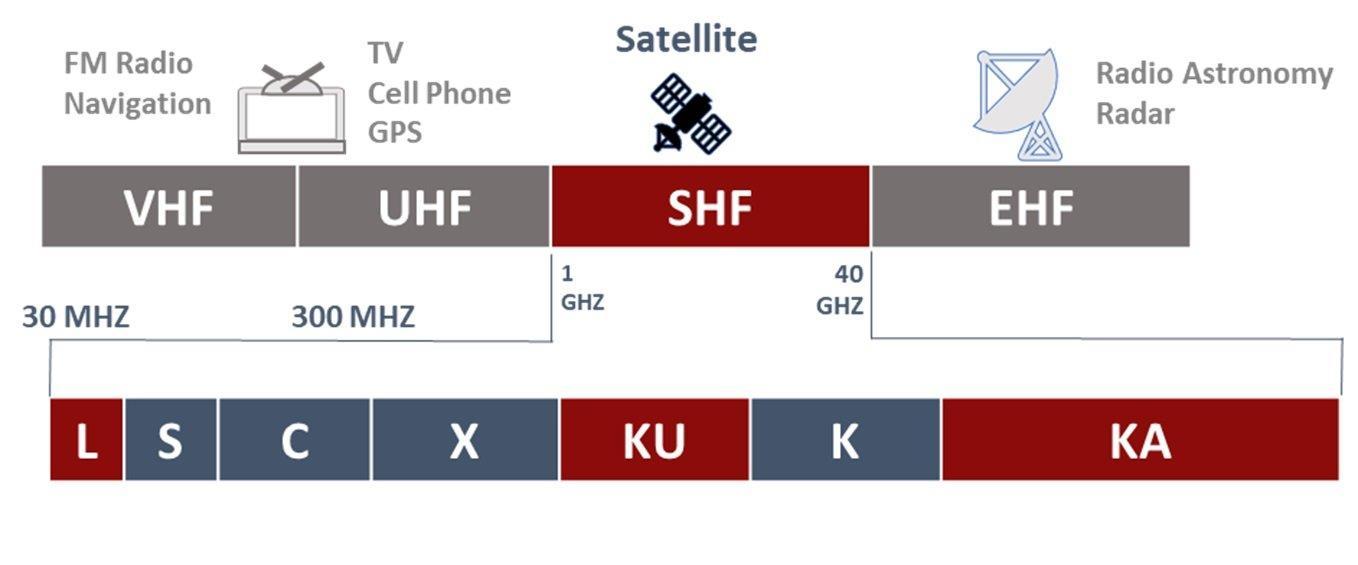

GEOSTATIONARY ORBIT (GEO)

GEO satellites operate in a circular earth-centered orbit with an orbital period that matches the earth’s rotation on its axis of 24 hr. The synchronization of rotation and orbital period means that the satellite stays at the same position in the sky where antennas can permanently point them. The GEO orbit is located at 35,786 km above the earth’s equator and concentrates most communications satellites. A minimum of 3 GEO satellites is required to cover the earth. There are currently over 400 active satellites in GEO orbit
LOW EARTH ORBIT (LEO)
LEO constellation uses satellites evaluating on an earth-centered orbit at a low altitude of 2000 Km or less. The lower altitude allows for smaller satellites with less powerful amplifiers. However, each satellite is only able to observe and communicate with a fraction of the earth at a time, meaning a constellation of many satellites is required to provide continuous coverage with each satellite continuously communicating with neighboring satellites The only fully operational LEO constellation is Iridium using 66 active satellites at 781 Km altitude to achieve real full earth global coverage

MEDIUM EARTH ORBIT (MEO)
MEO Constellation uses satellites evaluating an earth orbit altitude over 2000 Km and below the geosynchronous orbit. The GPS satellite-based navigation system is a good example of MEO operated constellation. Communications satellites that cover the North and South Pole are also put in MEO.
Frequency Bands
The L-Band is still the most used frequency in business aviation satellite connectivity. Designed mainly to provide cockpit safety services the global coverage of Lband satcom networks allowed for a large offering of first generation Lowspeed cabin connectivity solutions
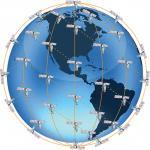
The Ku-band concentrates the largest number of regional satellite offerings. Developed originally for direct television broadcasting, the performance of Ku-band systems has improved in recent years, with typical speed now around 18 Mbps, which is enough to enable standard video streaming.
The Ka-band has more available capacity and is more efficient in its use of bandwidth. The Ka-band can achieve a speed of up to 33 Mbps, which is more than enough to enable live streaming of HD video and exceed the speed of many groundbased Wi-Fi services
ELITE WINGS MAGAZINE | 39
L-BAND (1-2 GHZ)
KU-BAND (12 - 18 GHZ) KA-BAND (26 - 40 GHZ)
ELITE WINGS MAGAZINE | 39
The Viasat Terabit Era
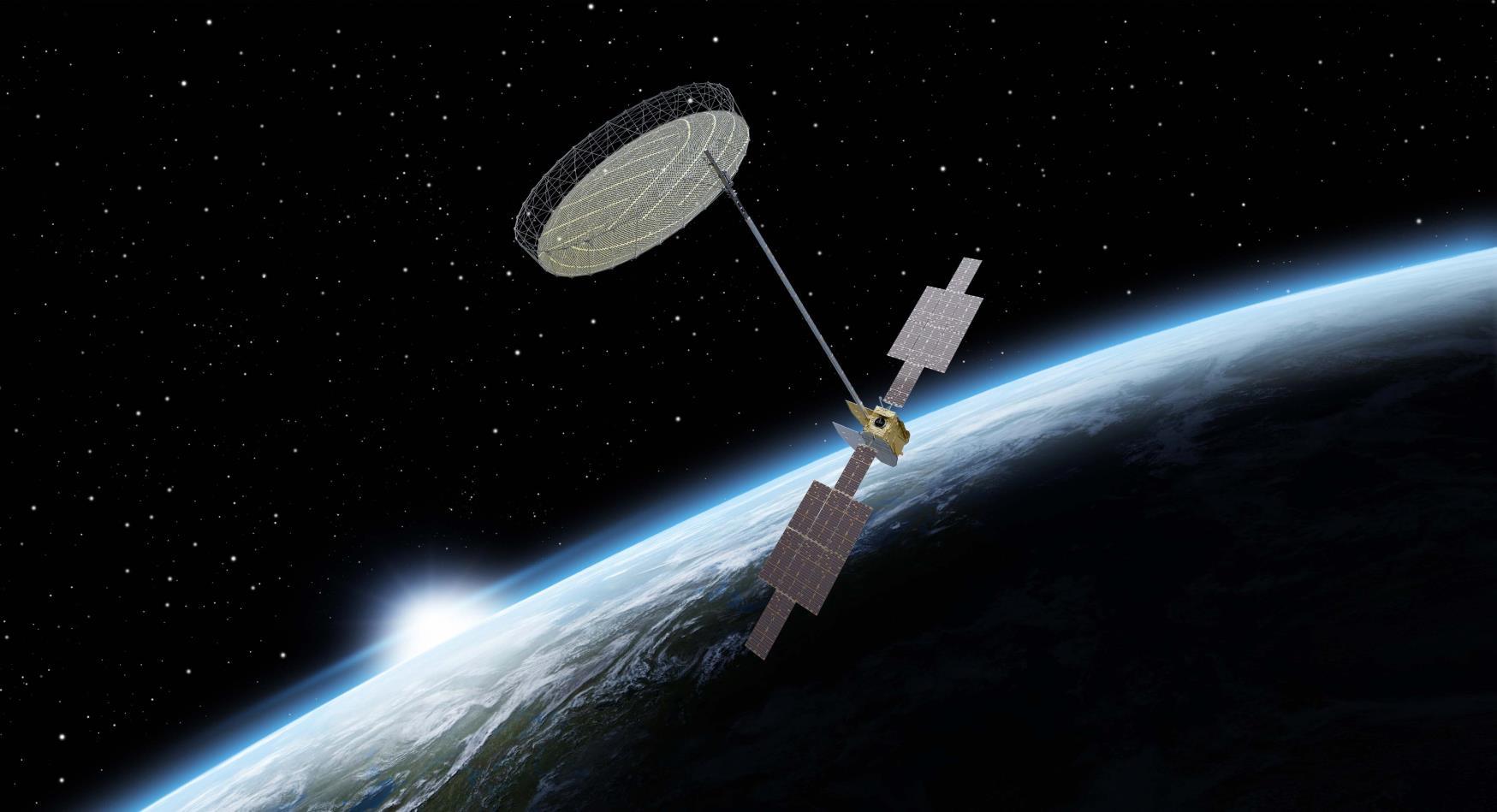
 By Abdelmajid Jlioui
By Abdelmajid Jlioui
| ELITE WINGS MAGAZINE
Getting Ready For
Claudio D’Amico, Viasat’s business area director, Business Aviation, answers EWM questions on the company’s current and future connectivity services offering.
Viasat has been leading business aviation in-flight connectivity for more than 20 Years, with satellite solutions in both Ku and Ka-Band. How is Viasat able to keep that leadership in one of the most demanding markets?
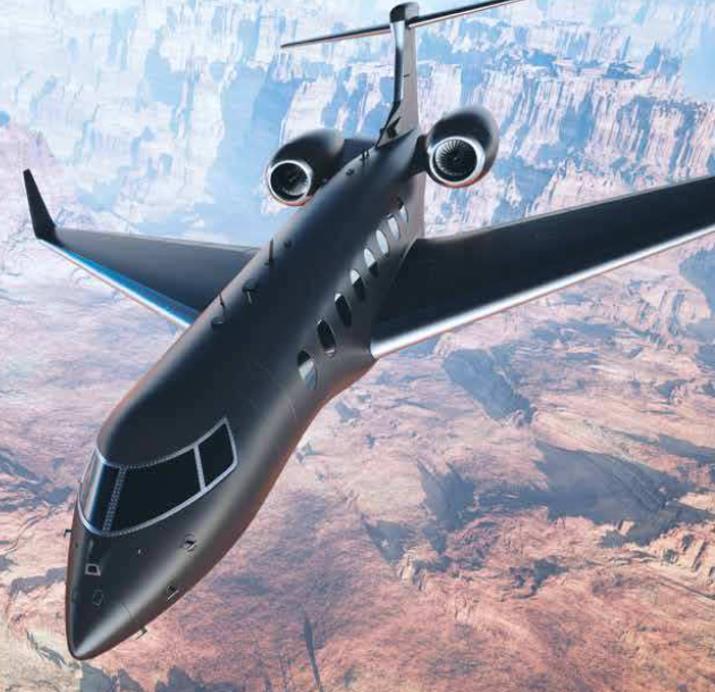
You’re right - we have been serving customers with satellite connectivity for more than 20 years now. Throughout that time, competition has always been fierce in the industry, and we expect it to continue; it’s good for the industry, innovation, and the end-user. Demand for mobile services is rapidly expanding today’s business aviation operators and owners expect highspeed, quality internet that provides experiences similar to those on the ground. That includes media streaming, live, HD video conferencing, downloading large files, email, web browsing, and live, in-flight TV services.
Maintaining our leadership position and providing best-inclass service to our customers is centered around the notion that capacity is the key to an exceptional, highspeed, high quality in-flight connectivity experience.
To that end, Viasat’s robust satellite network and future roadmap, including our next generation ViaSat-3 constellation set to launch in April 2023, specifically addresses this accelerating (and seemingly unsatiable) demand for connectivity no matter where we are, including 40k feet in the sky.
And with a proven track record of providing high quality connectivity at scale, not only to business jets but some of the world largest airlines, governments and even ships at sea, Viasat is well positioned to deliver on BizAv operators’ dynamic global capacity needs now and in the future.
Two additional point worth noting about maintaining a leadership position are:
▪ Our network is meticulously designed to densely layer bandwidth across thousands of aircraft in service, which is critical to delivering an excellent, “at home” experience to all connected passengers inflight.
▪ And the amount of capacity provided by our satellites enables us to making them extremely productive while maintaining favorable costs to our customers. For example, we have global and regional unlimited plans for as low as $9,995 per month that feature uncapped data coupled with Viasat’s popular “No Speed Limit” Ka-band connectivity. And we have entry-level service plans that are newly available, including a $2,795 per month regional plan.
2023 will be another big year for Viasat with the expected launch of the ViaSat-3 Americas satellite, the first of the three ultra-high-capacity Ka-band GEO satellites constellation. How do you see this new generation of satellites changing the game of In-Flight connectivity?
Yes, we’re thrilled about the launch of ViaSat-3 and what that will enable for our customers. ViaSat-3 is a great example of how we’ve continued to invest heavily in satellite technology to not only keep pace but exceed the increasing demand for connectivity around the globe. As we mentioned earlier, capacity is key to a great inflight connectivity experience, and the ViaSat-3 constellation is expected to boost Viasat’s total capacity by approximately 600%. In fact, each satellite is anticipated to deliver at least 1 Terabit of data per second (1Tbps) equal to 1,000 Gigabits per second. In business aviation, sufficient capacity – even during peak times of demand - is what provides fast, consistent performance at scale that allows passengers and crew to stream, video conference, connect to VPN, or anything else they might need to do online in flight.
Importantly, ViaSat-3 will have dynamic capacity shifting capabilities that enable it to meet surge demand. By intelligently shifting capacity to match supply with the dynamic level of connectivity demand, especially in concentrated geographical areas (such as hub airports or popular BizAv routes) has solved a key challenge for operators, resulting in fast and consistent connectivity during all phases of the flight, and across the entire fleet.
ELITE WINGS MAGAZINE | 41
Viasat in-house developed Ka Hardware has proven a great success in bringing broadband connectivity to even more aircraft types and especially the under-served midsize cabin jets. Can you walk us through some of the key characteristics of the new terminal and its aircraft types’ certification progress?
In the past, perhaps due to limitations on SWaP (size, weight and power) as well as cost of equipment or service, satellite-based high speed connectivity was an option for large cabin and long range aircraft only. Now with smaller shipsets, such as Viasat’s Ka-band 3-LRU shipsets, super-mid cabin aircraft can now have the same connectivity experience. In fact, Viasat is now able to provide connectivity on more that 20 aircraft types.
A few other notes:
▪ Viasat’s equipment only requires three linereplaceable units (LRUs).
▪ Every component from antenna to modem is optimized for our network.
▪ The hardware an operator installs now is forwardcompatible with our next-generation network.
▪ Equipment can be placed outside of the pressurized cabin, saving luggage compartment space.

As a side note, if an operator invests in a connectivity solution, they should be assured it will also work in the future. The Viasat Ka-band solution guarantees business jet owners backward and forward compatibility, ensuring the antenna and in-cabin systems can scale as Viasat launches new satellites.
In 2021, Viasat launched Viasat Select, a direct service offering for business aviation allowing for more tailored solutions. Can provide an overview of Viasat current service offering?
Viasat Select is a first-of-its-kind direct service model for business aviation Ka-band in-flight connectivity The service has introduced custom IFC solutions and compelling connectivity plans that are tailored to match a business aircraft’s specific operational profile
These Viasat Select service plans include global and regional unlimited plans that feature uncapped data paired with Viasat’s popular “No Speed Limit” Ka-band IFC. Viasat’s ability to offer both uncapped data and no speed limits is unique because of its Ka-band satellite capacity advantage, mentioned above
Viasat Select also offers entry-level service plans, including a sub-$3k regional plan that delivers Ka-band connectivity at a significant value, especially when compared to current air-to-ground or other satellitebased IFC options.
42 | ELITE WINGS MAGAZINE









43 | ELITE WINGS MAGAZINE WWW.ELITE-WINGS.COM ELITE WINGS The Information you need….When you need it! The Trusted Self-Serve Platform for Timely and Structured Business Aviation Intelligence Scan the QR code to view digital copies
Inmarsat
Introducing new connectivity solutions for current and future customers
By Abdelmajid Jlioui
Kai Tang, Head of Business Aviation, Inmarsat answers EWM questions
Since its introduction in 2016, Inmarsat Jet ConneX (JX) Ka-band offering for business aviation has been the gold standard for global broadband connectivity. Can you give an overview of the current JX-equipped fleet and typical passengers’ usage?
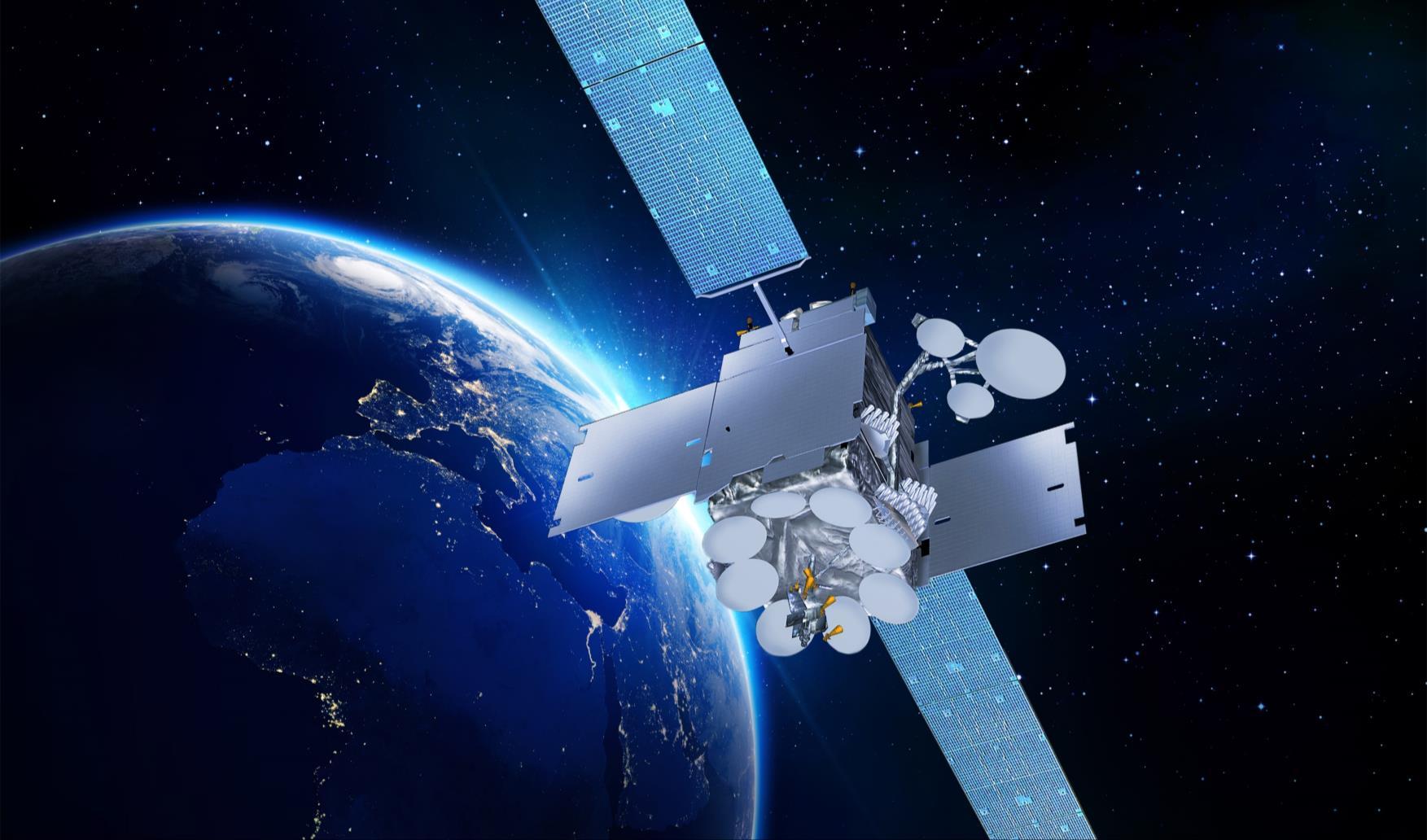
Since entering commercial service in November 2016, Jet Connex (JX) has established itself as the gold standard of inflight connectivity (IFC) in the business aviation market and remains the preferred linefit option of all major business jet manufacturers, including Gulfstream, Bombardier and Dassault. Today, JX has been activated on more 1,350 business jets, offering the same reliable, consistent and high-speed broadband that principals are accustomed to on the ground. This is in addition to more than 4,000 business jets equipped with our other aviation connectivity solutions, such as SwiftBroadband and Classic Aero for safety.
Interestingly, JX has achieved record usage since the pandemic – testament to the fast-growing expectations of passengers when it comes to staying connected. Now, principals can enjoy a digital onboard experience that supports an ‘office in the sky’ as well as video streaming, live TV, and more – all of which have grown in demand significantly since the pandemic.
The adoption of business aviation has accelerated since the pandemic amongst High-Net-Worth Individuals
(HNWs) and corporations – with IFC being a key driver. Taking time that was ordinarily ‘in the dark’, without connection to direct their business affairs, principals can now run meetings, and make important decisions in realtime, and importantly maintain the same levels of productivity, all from 30,000 feet.
The results from our latest business aviation survey, released last year, revealed a tipping point in business aviation. Connectivity is no longer a nice-to-have – it is essential. Over three quarters of respondents (87%) believe business aviation has evolved from a luxury asset into a business asset in its own right.
Meanwhile, Inmarsat’s Passenger Survey 2022 found that the majority of business travellers (92%) are more likely to rebook if quality Wi-Fi is available.
In an increasingly crowded market with new entrants either promoting cheaper plans or claiming super headline speeds, JX delivers certainty. After decades of experience, we know customers want and expect consistent performance anywhere, anytime and differentiated value adds that our partners provide to ensure the best end-to-end customer experience. Not only do we have a track record of meeting customer demand, as the only operator with a minimum speed commitment we can guarantee the delivery of a highly reliable, seamless service for our customers.
44 | ELITE WINGS MAGAZINE
2022 was a busy year for Inmarsat business aviation service offering with the announcement of the JX Evolution program at EBACE 2022. Can you give us an overview of this program?
Inmarsat prides itself on having unique insights into demand for inflight broadband, and how it is transforming for business and leisure. We can therefore develop our solutions ahead of any market shifts and reassure customers that as their needs continue to develop, so does the connectivity that we provide.
JX Evolution is about evolving the offer as we see our customers’ needs changing over time, rather than carpetbombing maximum speeds that will degrade over time. The JX Evolution programme is being developed following an extensive assessment of passenger usage trends and delivers superior speeds, performance and value for money. We’ve already upgraded a number of existing service plans as part of the programme to provide benefits such as increased upload rates at no additional cost. This meets growing demand for high-definition video conferencing on platforms like Microsoft Teams and Zoom.
Every now and then, we will see an immediate need to provide a higher speed plan that will consistently deliver the Inmarsat experience customers expect. A prime example of how we can quickly react to that is the launch of JX Edge, which is the first of the JX Evolution series of advanced, high-end service plans. Now available through Inmarsat’s global network of business aviation distribution partners, JX Edge went live with several customers around the world in October 2022 after receiving a highly positive market response, and will be followed by additional new service plans this year.
JX Evolution is setting an unprecedented new standard for business aviation IFC by leveraging Inmarsat’s global Kaband satellite network and Honeywell’s JetWave terminal. JX customers will also soon benefit from further performance enhancements with seven more Ka-band satellite payloads entering service over the next few years, increasing the network’s total fleet to 12. The current JetWave terminal will be supplemented by three upcoming next-generation terminals developed with our partners Satcom Direct, Orbit and Honeywell, which are compatible with a wide range of business jets. They each use cutting-edge technology optimised for business aviation installations – with fewer LRUs and next generation modem technology – which help to reduce costs and simplify the installation and maintenance processes.
This is a prime example of our unique build-up approach, which cannot be replicated by others and presents a welcome alternative to the over-promising and underdelivering of some connectivity providers. The gamechanging programme will provide even greater value and performance at a crucial time for business aviation, with flight volumes now higher than before the pandemic.
We have seen several new-generation terminals from Inmarsat’s partners, designed not only for high-speed connectivity performance but also bringing lightweight and simplified architecture. Do you foresee these terminals enabling JX Ka-band offering to extend to more aircraft types?
We realise that creating superior solutions like Jet ConneX takes more than just our own expertise. Collaborations with a trusted ecosystem of partners also plays an important role and provides our customers with more choice and flexibility tailored to their needs. It will also enable more super-mid sized aircraft to access our JX offering.
As a result, customers of both JX and SwiftJet, our upcoming business aviation inflight connectivity service over L-band, have a selection of terminals to choose from according to different aircraft types.
Focusing on the JX Evolution programme, Satcom Direct, Orbit, and Honeywell are developing next-generation terminals. The terminals are designed to be compatible with the widest range yet of business jets, using cuttingedge technology and lightweight designs to optimise performance, reduce costs and simplify the installation and maintenance processes.
In January, Satcom Direct completed the installation of the Plane Simple Ka-band antenna for JX on the company’s Gulfstream G550. This terminal consists of only two line-replaceable units (LRUs) – the tail-mount antenna and SD Modem Unit. Other key features include a modern lightweight design and simplified wiring to enable quicker and easier installation and maintenance. The terminal has been designed specifically to fully exploit all of the future capability being delivered by Inmarsat to match current and future connectivity needs in the business aviation market. As well as offering enhanced performance to the existing JX enabled airframes it will also open up JX to other airframes, particularly the super mid-size jet segment.
ELITE WINGS MAGAZINE | 45
INMARSAT | Jet ConneX | SwiftBroadBand | SwifJet
Following Satcom Direct’s PSKA terminal, Orbit’s AirTRX30 terminal is also progressing towards type approval on our global Ka-band satellite network, which powers JX. The advanced system is compatible with a wide range of business jets, from super mid-size to large cabin platforms, and includes only two Line Replaceable Units (LRUs), consisting of a modem manager (MODMAN) and tail-mounted antenna. A variant is already in wide use by the military on our GX (Ka) satellite constellation, so we’re excited to bring such an established antenna OEM to business aviation customers. The simplified architecture is optimised for efficient installation and weight savings, which in turn also helps to reduce its environmental impact.

The AirTRX30 builds on patented Orbit aperture designs that are already used by our government customers and will also be compatible with our upcoming Ka-band satellites, being launched over the next few years.
SwiftJet, meanwhile, uses advanced hardware from Honeywell, which can be equipped on a broad range of aircraft – and also supports cockpit and safety services. It will offer speeds up to six times faster than our existing Lband business aviation connectivity service, SwiftBroadband (SBB).
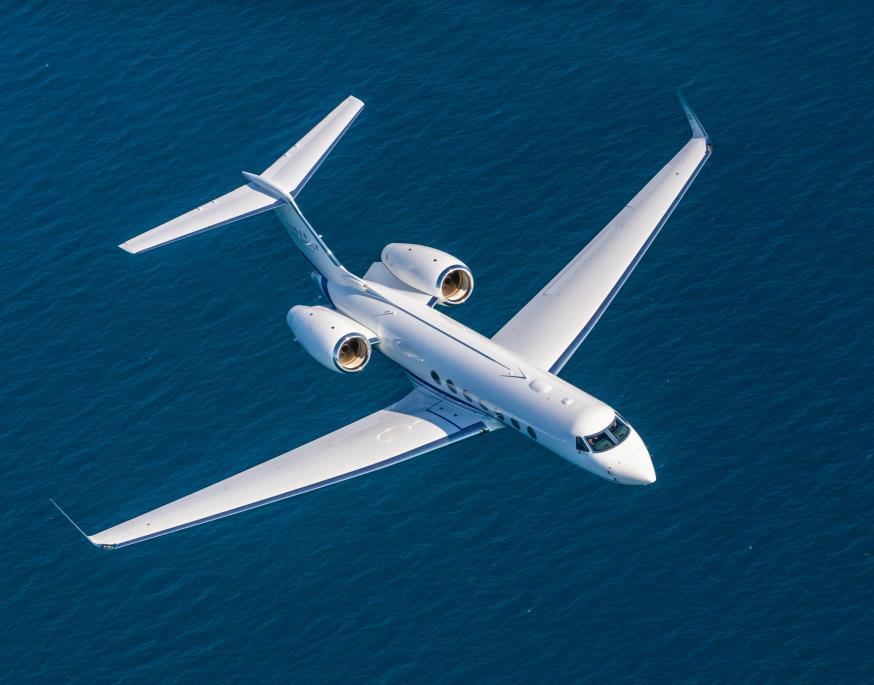
Existing SBB customers will benefit from a natural and seamless upgrade path through minimal changes to the installed equipment, while new customers will experience the same ease of installation as with any Inmarsat L-band terminal. The service also enables new capabilities and applications like YouTube and FaceTime for thousands of our customers using SBB, which have previously been restricted to basic voice or text connectivity that fails to meet the needs of modern-day business travellers.
Two Inmarsat-6 satellites are scheduled to enter service in 2023 and will support SwiftJet well into the 2030s and beyond, The L-band capacity on each of these sixth-generation satellites will be substantially greater than the fourthgeneration spacecraft and, among other enhancements, will deliver 50% more capacity per beam in addition to unlimited beam routing flexibility.
46 | ELITE WINGS MAGAZINE
Satcom Direct completed the installation of the Plane Simple Ka-band antenna for JX on the company’s Gulfstream G550

SES LuxStream Offering Update
By Viswanath Tata
Aditya Chatterjee, SVP, Product Management, Aviation for SES answers EWM questions
LuxStream was launched aboard the Vista Global fleet, through a joint offering by SES and Collins Aerospace to provide some of the fastest broadband connectivity for business aviation. What’s the market response been like to this revolutionary inflight connectivity offering?
SES’s LuxStream has seen exciting growth over the last 1218 months, and the breakthrough IFC service is poised to serve even more business jet passengers this year. Business aviation is set to expand post COVID and new users will experience and enjoy the fast connectivity services over our global satellite network.
SES continues to partner with Collins Aerospace to identify and introduce new inflight connectivity offerings that enable business jet passengers to realize the full potential of LuxStream IFC. LuxStream addresses the dynamic business aviation market by enabling even the most discerning business executives to have the same communications capabilities they have at the office in flight.
LuxStream is keeping business jet travelers connected with high-speed broadband for everything from business calls to email, live TV, and web browsing in the sky
SES is the world’s leading satellite operator with a large fleet of satellites in multiple orbits. Can you provide an update on the capabilities across SES’ constellations in geosynchronous (GEO) and Medium Earth Orbit (MEO) orbits?

SES is thrilled to report we have launched new satellites in GEO and MEO orbits that have already had a major impact on the future of connected travel. Our SES-17 satellite launched in 2021 is the most advanced GEO Kaband satellite in our fleet of 70 satellites. And SES-17 is bringing the long-awaited high-speed connected homeand office-like experience to the fingertips of air travelers flying increasingly busy routes throughout the Americas and Atlantic Ocean regions.
On the commercial aviation side, the first rollout of Thales’ FlytLIVE IFC service on SES-17 is especially noteworthy, as Spirit offers inflight Wi-Fi amenities, speeds and service options that aren’t typically available on ultra-low fare carriers. Spirit has transitioned the vast majority of its fleet to Thales’ FlytLIVE connectivity service delivered over SES-17.
Featuring a fully digital payload run by the most powerful digital transponder processor in orbit, unmatched flexibility, and nearly 200 user beams, the SES-17 satellite is not only a serious tech advancement but a major step in the integration of SES’s multi-orbit network.
48 | ELITE WINGS MAGAZINE
The spacecraft is interoperable with SES’s secondgeneration O3b mPOWER satellite communications system in MEO orbit, which saw its first two satellites launched late last year. This first-of-its-kind multi-orbit, GEO-MEO capability will ultimately have more gamechanging implications on connected planes, cruise ships, yachts – the whole world of travel. SES will blend GEO and MEO satellite capacity to seamlessly enable connectivity in the air, at sea and on land.

GEO connectivity is ideal for the delivery of live broadcast TV on flights, while MEO, with its inherent low latencies, is better suited for transporting high-speed broadband services. The combination equates to a far better passenger experience, as well as pilots better equipped, for example, with real-time weather reports that allow them to avoid dangerous conditions and turbulence.
Business jet travelers are among the most discerning travelers with very high expectations when it comes to the availability and reliability of their onboard connectivity. How is SES’ deep experience in serving the aero market enabling you to effectively address this demanding clientele?
SES is the only operator in the world today running satellite constellations in multiple orbits, and that diversity in coverage and capabilities around the globe enables us to serve the aero market better than ever before. We’ve been enabling global inflight connectivity services for decades, collaborating with the leading connectivity system service providers and airlines to ensure the best possible passenger experience aboard both commercial and business flights. While all airline passengers are more discerning than ever – many reserving and boarding their flights based on the availability of quality IFC services – business travelers want business connectivity services in the air.
SES and Collins have raised the bar for inflight connectivity with a future-proof solution that allows us to accelerate the availability of next-gen services, such as cloud-based enterprise applications and streaming media on business jets.
LuxStream is powered by SES’s next-gen Ku-band High Throughput Satellite (HTS) and wide beam satellite technology that drives an exceptional connectivity experience that can be easily customized to the requirements of individual business aviation providers anywhere they fly.
SES and Thales demonstrated how an interoperable GEO/MEO platform can change the inflight connectivity game for commercial and business aviation. Can you provide an overview of this disruptive technology and its current readiness for business aviation?
SES launched our advanced SES-17 HTS Ka-band satellite services in GEO last year to enable a new level of support aboard commercial airlines, and we plan to launch our complementary O3b mPOWER MEO services later this year. The combination will represent the first interoperable GEO/MEO platform for very high-speed inflight connectivity services.
While these services are currently designed and developed for commercial aviation, SES and our partners will be developing and deploying equally transformational IFC solutions for business aviation. It’s an exciting future of connected travel aboard business jets, and SES is thrilled to be leading the way.
ELITE WINGS MAGAZINE | 49
SES LuxStream
O3b mPOWER is SES nextgeneration MEO satellite constellation designed to launch a new era of satellite services.
Abdelmajid Jlioui

Frequency Band Operator BIZAV Offering Coverage Service Launch Low Earth Orbit (LEO) L IRIDIUM Iridium Certus Fully Global 2019 KU OneWeb OneWeb Fully Global 2024 SpaceX Starlink Aviation 2023 Geostationary Orbit (GEO) L INMARSAT SwiftBroadband (SBB) Global 2009 INMARSAT SwiftJet Global 2023 KU INTELSAT FlexExec Global 2018 SES LuxStream Near Global 2019 KA INMARSAT Jet ConneX (JX) Global 2016 VIASAT KA-Band Regional 2018 INMARSAT JX Evolution Global 2024
OFFERING
50 | ELITE WINGS MAGAZINE By
SATCOM NETWORKS
GUIDE
Iridium Certus
The Iridium constellation is based on 66 satellites orbiting in 11 planes. the service’s high availability is achieved by the addition of 9 on-orbit spare satellites and 6 additional ready to launch in the ground. At only 780 kilometers from the Earth, Iridium’s LEO network means pole-to-pole coverage, shorter transmission paths, stronger signals, lower latency, and shorter registration time than with GEO satellites.


HARDWARE
Iridium is the only network that can deliver reliable broadband connectivity to small form factor, low-profile antennas. With a height of less than 6cm, Iridium antennas produce almost no drag and can be installed just about anywhere on the aircraft. Iridium small form factor hardware is ideal for helicopters, turboprops, and light jets. The system can also offer a very attractive backup system for larger airplanes looking for high availability and fully global coverage including polar routes.
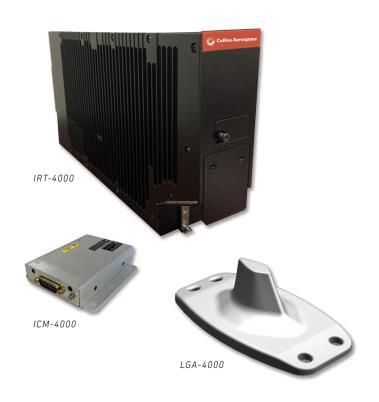
Since 2002 Iridium’s unique constellation of low orbit satellites is delivering high-quality voice and data services The complete constellation upgrade in early 2019 enabled the launch of Iridium Certus, an award-winning advanced multi-service platform with speed capabilities ranging from 22 to 1408 Kbps Offering the highest L-Band data throughput, Iridium Certus provides the flexibility to scale device speed, size, and power requirements, both up and down, based on the needs of endusers.
COVERAGE
SERVICE PROVIDERS



AIRCRAFT OFFERING

ELITE WINGS MAGAZINE | 51
Service Launch Coverage Speed Plan Cost Hardware Weight 2019 Global 352 Kbps 1.4 Mbps (Planned) TBD 10-14 Lbs
Collins Aerospace IRT-4XX0
TURBOPROPS JETS BIZLINERS Light Medium Large
HARDWARE
London-based OneWeb is constructing a satellite communications network that will be powered by 648 satellites in 12 synchronized polar orbits operating in low Earth orbit (LEO) at an altitude of 1,200km. Each satellite operating in the Ku-band will offer 8 Gbps of bandwidth for a global usable network capacity of over 1.1Tbps. The LEO network promises a low latency of less than 100ms and a truly global coverage including polar routes

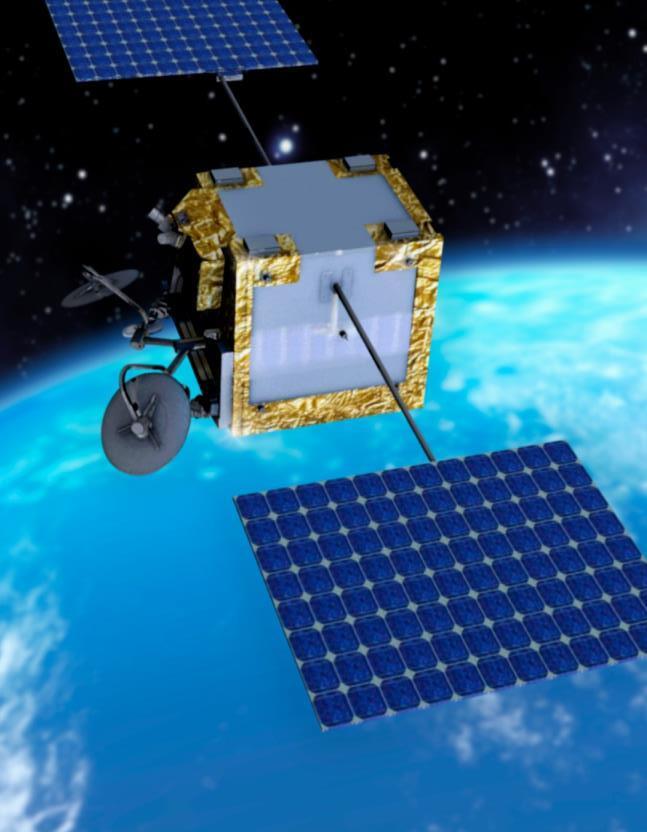
As of March 2023, OneWeb has launched 618 satellites – more than the 588 needed to deliver truly global coverage Aviation services will be launched in 2024
OneWeb is backed by leading connectivity investors including the UK government, India-based Bharti Global, the world’s largest telecom company, France-based satellite operator Eutelsat and Hughes Network Systems.
At EBACE 2022, both Gogo Business Aviation and Satcom Direct announced the launch of a global service powered by OneWeb network


COVERAGE
OneWeb is partnering with leading avionics suppliers to create next-generation user terminals and antennas unique to business aviation and unique to OneWeb. These fuselage-mounted electronically steered antennas (ESA) promise to be considerably lighter than traditional mechanically steered antenna technologies, with a significantly reduced profile, reducing drag and fuel burn.
In 2022 Gogo announced the design of its OneWeb ESA antenna in conjunction with Hughes Network Systems, the antenna will be housed on an assembly small enough for any business aircraft including turboprops. Satcom Direct is also developing a small form-factor flat ESA to be available in 2024.

SERVICE PROVIDERS
AIRCRAFT OFFERING
52 | ELITE WINGS MAGAZINE
Service Launch Coverage Speed Plan Cost Hardware Weight 2024 Global Up to 195 Mbps TBC TBC
OneWeb
Picture: ©OneWeb
TURBOPROPS JETS BIZLINERS Light Medium Large
Picture: ©OneWeb
HARDWARE
In December 2022, SpaceX revealed that its Starlink constellation has started providing “high-speed, low-latency Internet to passengers during flights on the first JSX jet”.
Starlink is the name of a satellite network developed by the private spaceflight company SpaceX to provide low-cost internet to remote locations. According to astronomers, the Ku-band LEO constellation – flying at 550 km (340 miles) - had nearly 4,000 satellites in orbit. In 2018 FCC granted SpaceX permission to fly up to 12,000 Starlink satellites.


In 2023, SpaceX announced the start of its Gen2 network with more capable V2 satellites.
Starlink has been highly promoted for residential service in remote and rural locations and on the road RV installation. SpaceX branded its satellite-supported inflight connectivity service as Starlink Aviation and urged aircraft operators to reserve the solution now for “priority deliveries” beginning in 2023. The company revealed via its website that STCs were in development for the ERJ-135 and ERJ-145 ( Flown by launch customer, semi-private operator JSX), as well as a raft of business aircraft types. It is however still unclear how Starlink plans to support their business aviation customers.

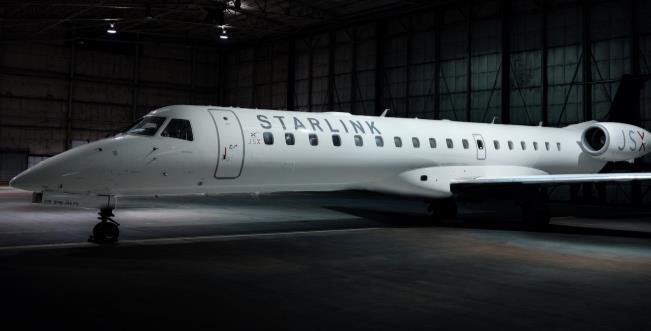
COVERAGE
SERVICE PROVIDERS
SpaceX announced a one-time hardware cost of $150,000. The hardware comprises an aero terminal, featuring an electronically steered phased array antenna; plus, power supply, two wireless access points and harnesses.
AIRCRAFT OFFERING

ELITE WINGS MAGAZINE | 53
Service Launch Coverage Speed Plan Cost Hardware Weight 2023 Global Up to 350 Mbps $12,500 - $25,000 TBC
SpaceX Starlink
Picture: ©SpaceX
TURBOPROPS JETS BIZLINERS Light Medium Large
SwiftBroadband (SBB) operates over Inmarsat’s I-4, as well as the new I-6 satellite constellation, covering all major aviation routes, and every hidden island getaway, worldwide.
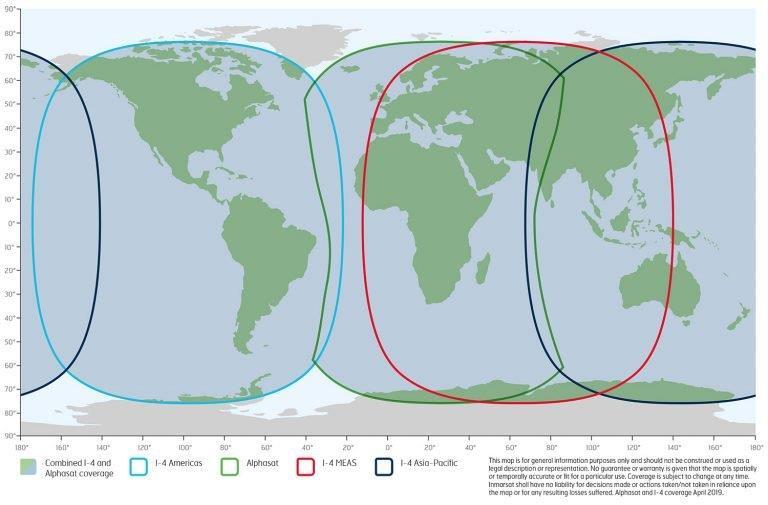
SBB allows simultaneous voice and IP data communications over low-profile antennas that are significantly smaller and lighter than any other systems on the market. Each I-4 satellite combines 228 spot beams with 19 wide beams, capable of providing up to four channels of 432Kbps to a High Gain Antenna. The three I-4 satellites are complemented by Alphasat, which provides an additional capacity of over 33% of the I-4 coverage area.
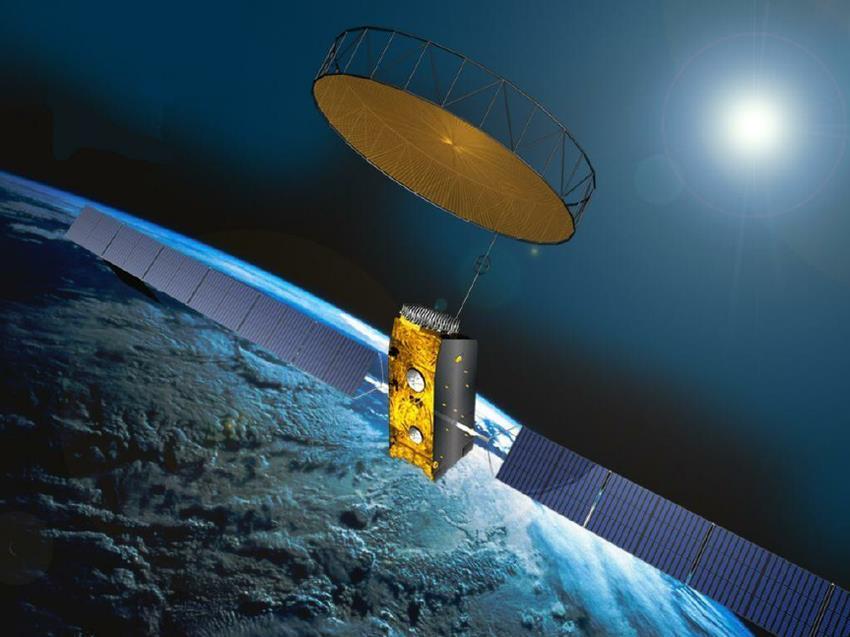
HARDWARE
SBB Satcom hardware is available from four avionics manufacturers: Thales, Cobham, Honeywell, and Collins Aerospace.
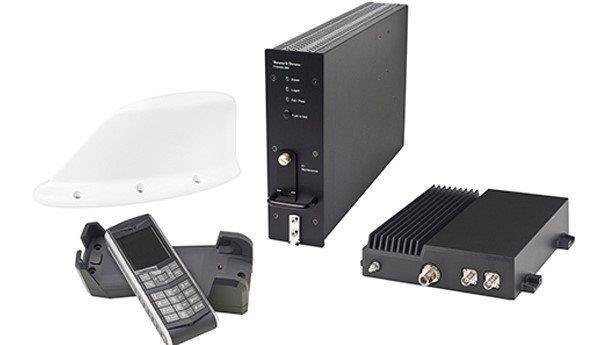


The service data speed is dependent on the category of the installed antenna:
▪ High Gain Antenna (HGA) | 432Kbps per Channel
▪ Intermediate Gain Antenna (IGA) | 332Kbps per Channel

▪ Low Gain Antenna (LGA) | 200Kbps per Channel
Inmarsat SwiftBroadband
Inmarsat was set up by the International Maritime Organization (IMO) in 1979 to provide a satellite communications network that would protect the lives of mariners anywhere at sea. This service was extended to aviation and now with more than 33 years’ experience as a pioneering aviation connectivity services provider, Inmarsat is a trusted provider of cockpit and cabin connectivity services. Inmarsat currently owns and operates 15 geostationary satellites powering seamless safety and missioncritical mobile broadband communications around the world. To meet ever more complex bandwidth demands, five further Inmarsat satellites will be launched by 2025 and its ground network will also significantly expand to support them. The SwiftBroadband (SBB) service supports text, high quality voice calls, email, internet access, and mobile data applications, offering seamless global coverage and unrivalled satellite and ground network availability of over 99.9 percent. There are currently with more than 4,000 in-service SBB installations.
COVERAGE
SERVICE PROVIDERS
AIRCRAFT OFFERING

54 | ELITE WINGS MAGAZINE
TURBOPROPS JETS BIZLINERS Light Medium Large
Service Launch Coverage Speed Plan Cost Hardware Weight 2009 GLOBAL 432 Kbs $7K - $40K 44.5 Lbs
Inmarsat remains highly committed to Lband services, with the addition of two Inmarsat-6 satellites. Constructed by Airbus Defence and Space, the I-6 satellites are the world’s most technologically advanced commercial communications satellites ever launched. I-6 F1 successfully launched on 22 December 2021 and was followed by I-6 F2 on 18 February 2023.
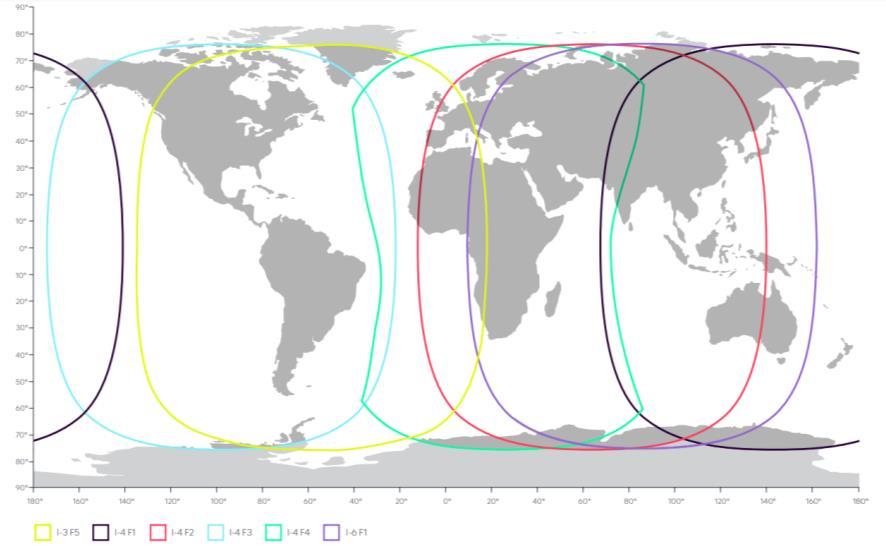

In comparison to the I-4s, the I-6s bring a host of performance enhancements delivering direct customer benefits, such as additional beam agility, dynamic beam routing flexibility, 70% more power and 90% greater sensitivity - meaning even sharper, more reliable connectivity. They also provide 50% more capacity per beam and 75% higher spectral efficiency –meaning that substantially more data can be carried over the same amount of bandwidth.
HARDWARE
Inmarsat SwiftJet

Inmarsat’s SwiftJet service will set a new benchmark in satellite communications, delivering the fastest ever speeds over L-band and can be equipped on a broad range of aircraft. As one of the first new services to be introduced on Inmarsat’s ELERA satellite network, SwiftJet will offer seamless global coverage across flight routes with maximum speeds of 2.6 Mbps, which is six times faster than SwiftBroadband (SBB), while supporting cockpit and safety services.
Existing SBB customers will benefit from a seamless upgrade path through minimal changes to the installed equipment, while new customers will experience the same ease of installation as with any Inmarsat L-band terminal.
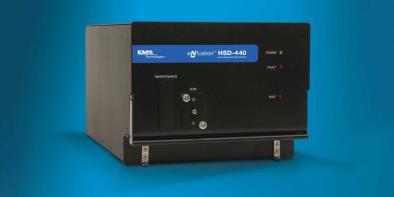
The service will allow passengers to further enhance their secure ‘office in the sky’ with supporting video calls, web browsing and email. Applications like YouTube and FaceTime, which were previously challenging over L-band, will also be enabled, bringing this previously unavailable capability to the smaller jet market.
COVERAGE
For Honeywell equipped aircraft, the modification will be limited to the Satellite Data Unit (SDU) upgrade. The new offering will not require any wiring, antenna or radome changes and will be certified as a minor modification to the existing STC.
SERVICE PROVIDERS

ELITE WINGS MAGAZINE | 55
Service Launch Coverage Speed Plan Cost Hardware Weight H2 2023 GLOBAL 2.6 Mbps (Maximum) $7K - $40K 44.5 Lbs
TURBOPROPS JETS BIZLINERS Light Medium Large AIRCRAFT OFFERING
Luxstream delivers uninterrupted global connectivity via SES high-throughput satellites (HTS) overlaid with wide-beam coverage
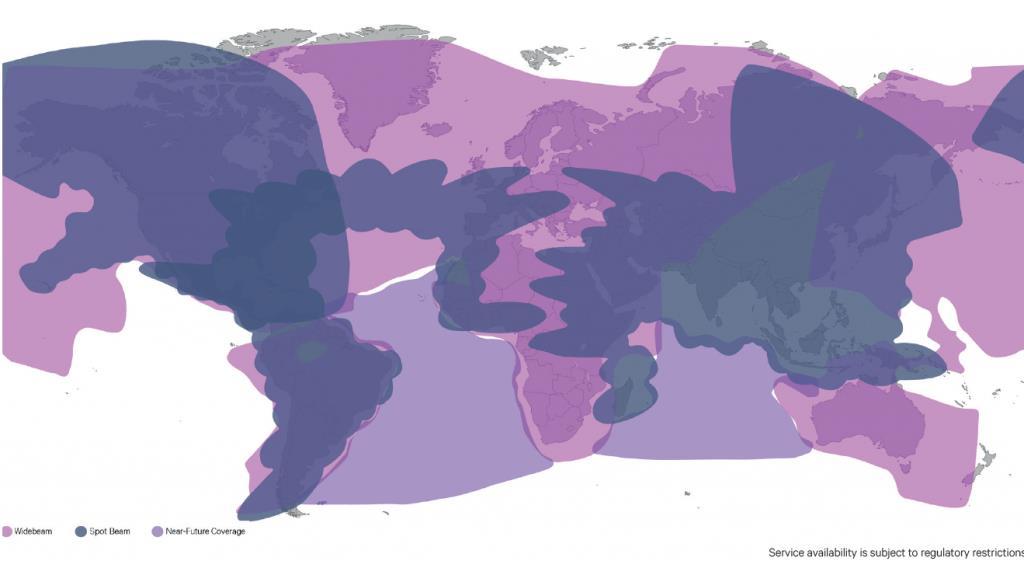
SES operates three latest generations
GEO HTS satellites:
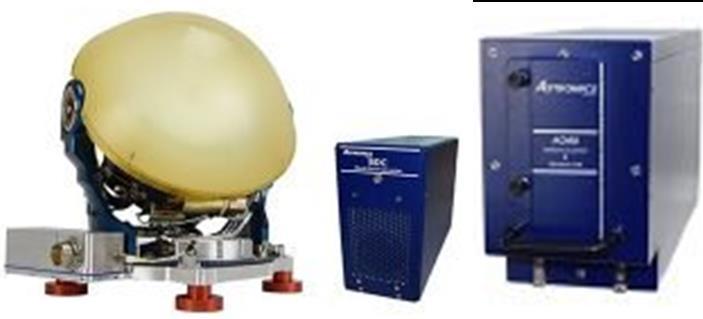
▪ SES-12: Launched in 2018 providing coverage for middle-East and Asia Pacific regions
▪ SES-14: Launched in 2018 providing coverage for the Americas region

SES LuxStream
Powered by Luxembourg-based SES, the world’s leading satellite operator with over 70 satellites, LuxStream promise to deliver an exceptional private jet connectivity experience. The new high-end service capitalizes on SES’s next-generation Kubased satellite technology – both high-throughput satellites (HTS) and wide beam – and ground infrastructure to bring business aviation customers the fastest broadband speeds available within the United States.
Developed In collaboration with Collins Aerospace, LuxStream secured Vista Global as a launch customer for the service that will be installed on 35 of the company’s Bombardier Global business jets.
The exceptional partnership between Collins Aerospace and SES allows for a turn-key solution offering, combining both hardware and service with flexible pricing models to meet the sophisticated operator’s mission.
COVERAGE
HARDWARE
▪ SES-15: Launched in 2017 providing coverage for North America and the Caribbean
HARDWARE
Collins Aerospace delivers LuxStream through the KuSAT-2000 tail mount satellite terminal
The KuSAT 2000 system developed with Astronics is composed of four aircraft
LRUs:
▪ A Gimbal Antenna Unit (GAU)
▪ Antenna Control & Modem Unit (ACMU)
▪ A Block Up Converter (BUC)
▪ A Block Down Converter (BDC)

SERVICE PROVIDERS
AIRCRAFT OFFERING
56 | ELITE WINGS MAGAZINE
Service Launch Coverage Speed Plan Cost Hardware Weight 2019 Near Global 25 Mbps (CONUS) 15 Mbps (Global) $7.4K - $23.5K 47.3 lbs
TURBOPROPS JETS BIZLINERS Light Medium Large
FlexExec is specifically engineered to cover high traffic routes with High Throughput Satellite (HTS) Ku-band coverage, with layers of wide beam capacity for added resiliency and redundancy. FlexExec allows for maximum flexibility, efficient use of bandwidth, and managed services which are critical when routes and passenger requirements shift unexpectedly. The open architecture design of FlexExec allows Satcom Direct to analyze network demand and usage to ensure that capacity is available, with the ability to add additional capacity, as necessary.
HARDWARE
Intelsat FlexExec
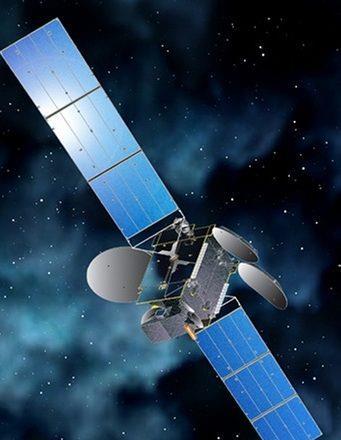
At the 2018 NBAA convention in Orlando, Intelsat, the world’s largest satellite fleet operator, launched its own end-to-end managed service FlexExec dedicated to business aviation. FlexExec provides dedicated bandwidth not shared by commercial aviation or consumer broadband users.
Intelsat FlexExec is a global, secure, multi-layered broadband satellite connectivity service that delivers consistent, highperformance coverage. The service is designed to offer a reliable and consistent connectivity experience to business aircraft passengers.
Offered exclusively through Satcom Direct, FlexExec offers an Industry-first service plan flexibility tailored to meet sophisticated flight department needs.

COVERAGE

SERVICE PROVIDERS
FlexExec is now available with the compact Satcom Direct manufactured

Plane Simple® tail mount antenna system
The advanced Plane Simple® features only two-Line Replaceable Units (LRUs), simplifying installation and configuration
AIRCRAFT OFFERING

ELITE WINGS MAGAZINE | 57
Service Launch Coverage Speed Plan Cost Hardware Weight 2018 GLOBAL 15 Mbps Customized 48 Lbs
TURBOPROPS JETS BIZLINERS Light Medium Large
JX is powered by Inmarsat’s global Kaband satellites network. With Inmarsat’s continued investment in advanced technologies and satellite coverage already underway, JX will continue to meet the needs of business aviation passengers for decades to come, protecting the operator’s investment for as long as they own their aircraft.
HARDWARE
Inmarsat Jet ConneX
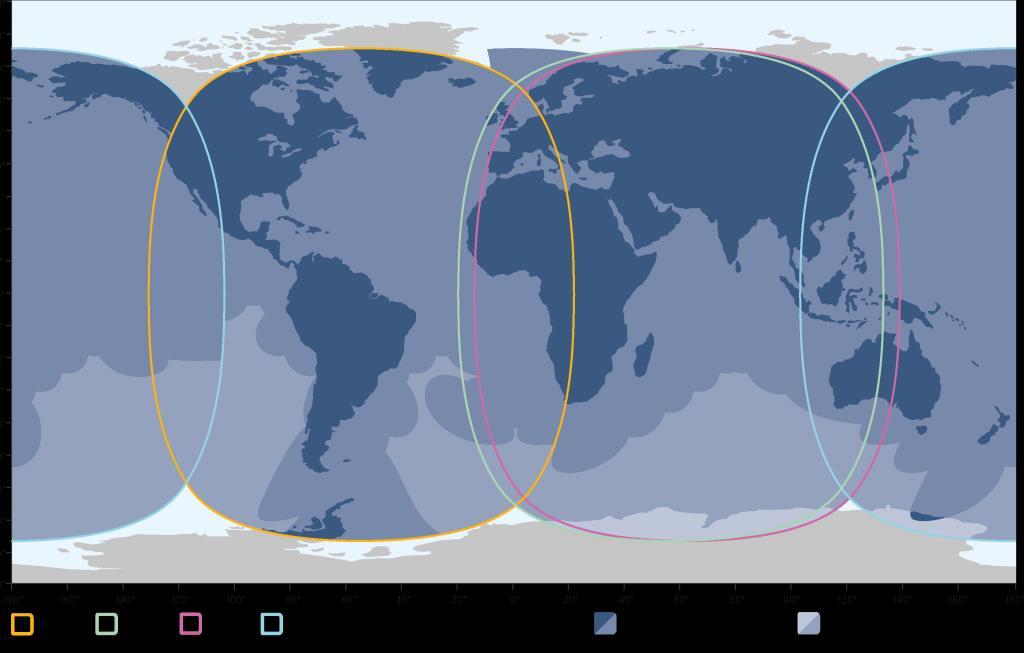

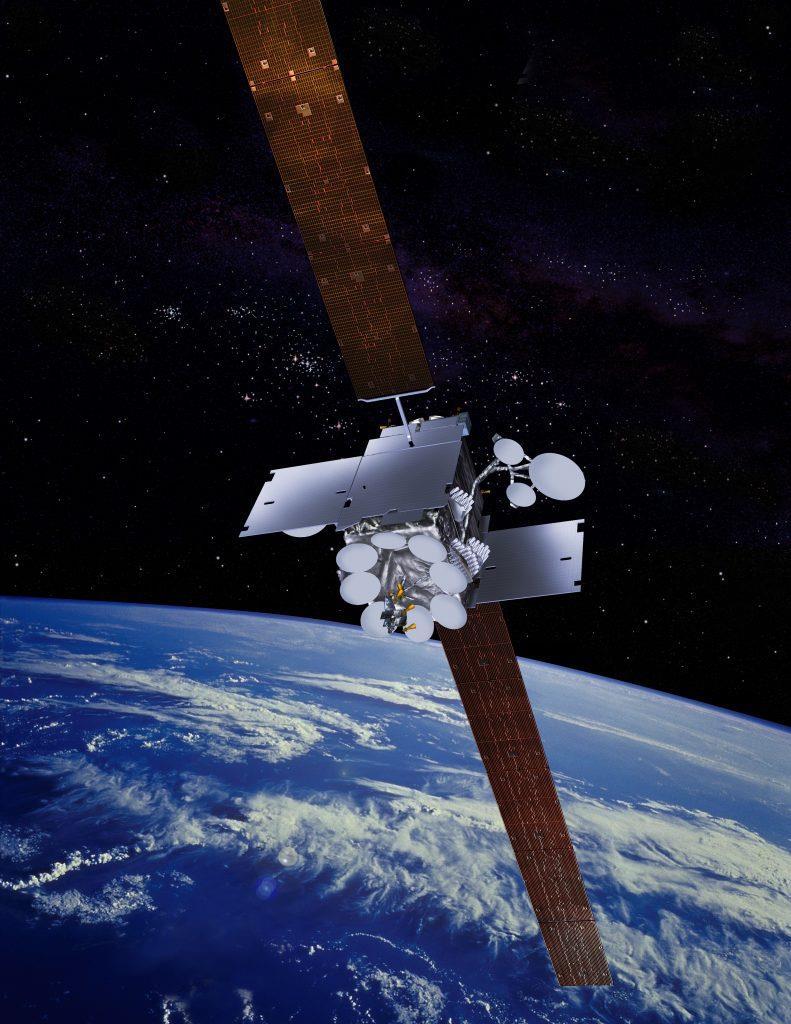
The Honeywell JetWave MCS 8000 system is offered exclusively by them and consists of four major components:

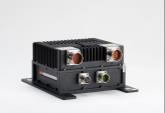

▪ Tail Mounted Antenna (TMA)

▪ Antenna controller to accurately point the antenna to the satellite
▪ RF unit to blast the data through space
▪ Modem to process the incoming and outgoing data

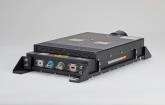
Inmarsat’s Jet ConneX (JX) inflight broadband solution offers business aviation passengers the highest speed and most extensive coverage of international flight routes in the market. It’s the first worldwide Ka-band network available to business aviation from a single operator, delivering a reliable, secure, uninterrupted, high-quality Wi-Fi experience to principals wherever they fly. It provides data speeds capable of supporting video-streaming, Voice over IP (VoIP), live TV, large file transfers, and VPN.
Inmarsat’s Jet ConneX (JX) inflight broadband solution offers business aviation passengers the highest speed and most extensive coverage in the market. Powered by Inmarsat’s global Ka-band satellite network, it delivers a reliable, secure, uninterrupted, high-quality Wi-Fi experience to operators wherever they fly. With advanced capabilities, it provides data speeds capable of supporting all types of online activities from video-streaming, Voice over IP (VoIP), live TV, large file transfers, and VPN. Anything that can be done on the ground can be done with Jet ConneX
JX is the only business aviation connectivity solution to offer Committed Information Rates (CIR), consistently offering speeds well in excess of guaranteed speeds. Since entering commercial service in November 2016, JX has been activated on more 1,350 business jets, offering the same reliable, consistent and high-speed broadband and has become the airborne connectivity gold standard that is the preferred linefit option of all major business jet manufacturers, including Gulfstream, Bombardier and Dassault.
COVERAGE
SERVICE PROVIDERS
AIRCRAFT OFFERING
58 | ELITE WINGS MAGAZINE
Service Launch Coverage Speed Plan Cost Hardware Weight 2016 GLOBAL Up to 20 Mbps $7K - $40K 44 Lbs
TURBOPROPS JETS BIZLINERS Light Medium Large
Current Viasat high-speed Ka-band coverage focus on high business jet traffic routes in north. central America, the Caribbean region, Brazil, Europe and trans-Atlantic routes. In 2023, the first ViaSat-3 satellite will launch. ViaSat-3 is a constellation of 3 ultra-high throughput GEO satellites designed to provide a global coverage.
HARDWARE
Viasat developed Global Aero Terminal 5510 (GAT-5510) offers a compact Kaband Satcom terminal compatible with large and mid-size business jets. The system consists of four major components:

▪ 2-axis steerable 2-way Ka-band antenna with an integrated ACU,
▪ Antenna power supply unit,
▪ Modem.
The GAT-5510 easily integrates onto an aircraft with a tail, fuselage, or hatchmounted antenna and onboard modem.
Viasat Ka-band

Viasat is transforming the in-flight connectivity experience by offering unprecedented Wi-Fi speeds and performance through advanced high-capacity Ka-band satellites.
Launched in 2011 ViaSat-1, a single satellite offering 140 Gbps of throughput in Ka-Band over North America was joined in 2018 by ViaSat-2 expanding Ka-band coverage across North and Central Americas, Caribbean, and trans-Atlantic routes.
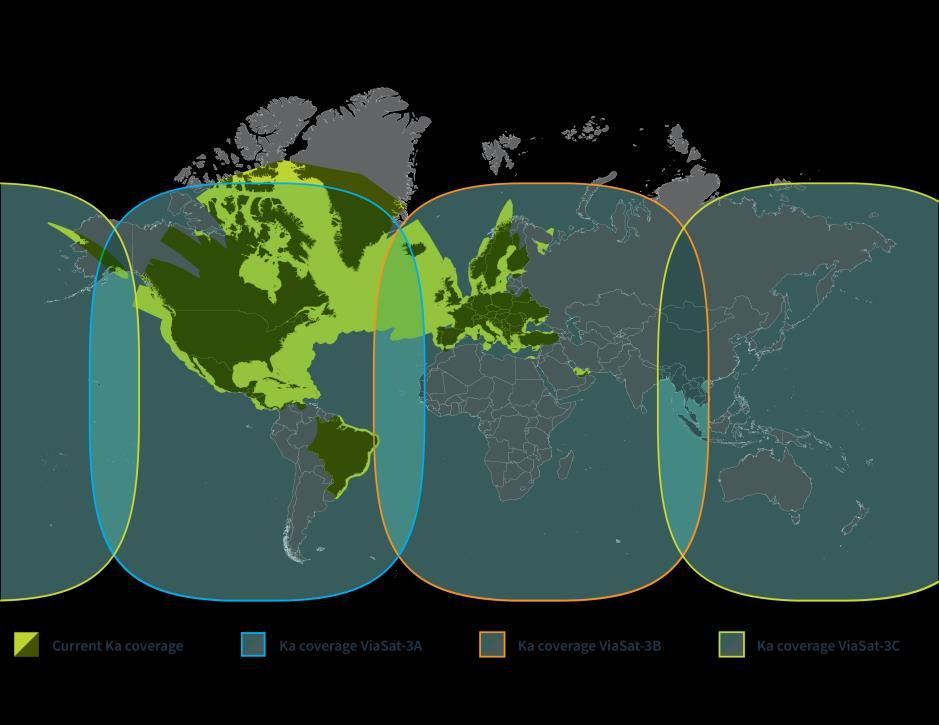
In 2020 Viasat removed all Internet speed limits to enable more efficient use of data-intensive passenger and flight crew applications. Since the removal of the speed restriction, some operators have already seen speeds of up to 100 Mbps. Viasat’s leadership in the KA-band will be further enhanced with ViaSat-3, comprised of three satellites and ground network infrastructure, planned to begin launching in 2023. Each satellite will offer 1 Tbps of throughput Ka-Band and will be placed to provide global surface coverage. Completion of the global constellation is expected in 2024.

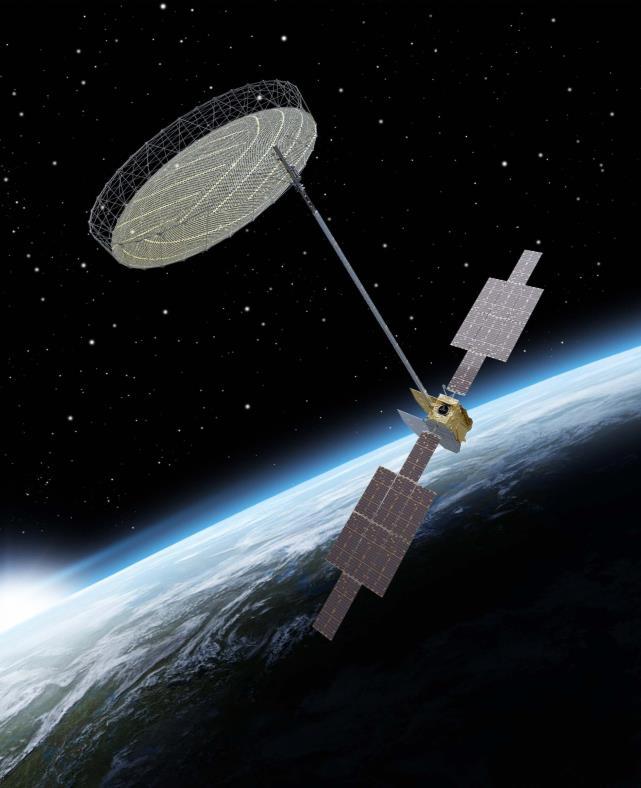
AIRCRAFT OFFERING
COVERAG E


ELITE WINGS MAGAZINE | 59
Service Launch Coverage Speeds Plan Cost Hardware Weight 2018 Regional ~ 30 Mbps (Typical) No Speed Limit $3K - $14K 51 lbs
TURBOPROPS JETS BIZLINERS Light Medium Large
JX customers will soon benefit from further performance enhancements with five more Ka-band satellite payloads entering service over the next few years, increasing the network’s total JX fleet to 14.


HARDWARE
Inmarsat JX Evolution

Announced during EBACE 2022, JX Evolution is a major upgrade programme that will increase Inmarsat’s business aviation Ka-band service Jet ConneX (JX) inflight broadband speeds. JX Evolution will set an unprecedented new standard for business aviation inflight connectivity by leveraging Inmarsat’s global network, including enhanced capabilities from its highly advanced upcoming satellites, in addition to the latest terminal technology from its business aviation partners. Initial testing as part of JX Evolution programme has already demonstrated speeds in excess of 100 Mbps using Inmarsat’s existing satellites. This enhanced capability will enable users to simultaneously connect even more devices and enjoy even the most data-hungry applications, such as high-definition video. As part of the programme, a number of existing service plans have been upgraded to deliver valuable customer benefits such as increased upload rates, at no additional cost, which meets growing demand for high-definition video conferencing on collaborative platforms, including Microsoft Teams and Zoom. Development of the JX Evolution programme accelerated the launch of JX Edge in October 2022, which was the first in a series of advanced, high-end service plans.
COVERAGE
JX Evolution will leverage the latest terminals using cutting-edge technology and lightweight designs to optimise performance, reduce costs and simplify the installation and maintenance processes. Honeywell’s JetWave terminal will be supplemented by three upcoming, smaller, lighter and easier to install and maintain, next-generation terminals developed with Inmarsat partners Satcom Direct, Orbit and Honeywell.

SERVICE PROVIDERS

AIRCRAFT OFFERING

60 | ELITE WINGS MAGAZINE
Service Launch Coverage Speed Plan Cost Hardware Weight 2022 Program Launch GLOBAL 100+ Mbps $7K - $40K 44 Lbs
TURBOPROPS JETS BIZLINERS Light Medium Large
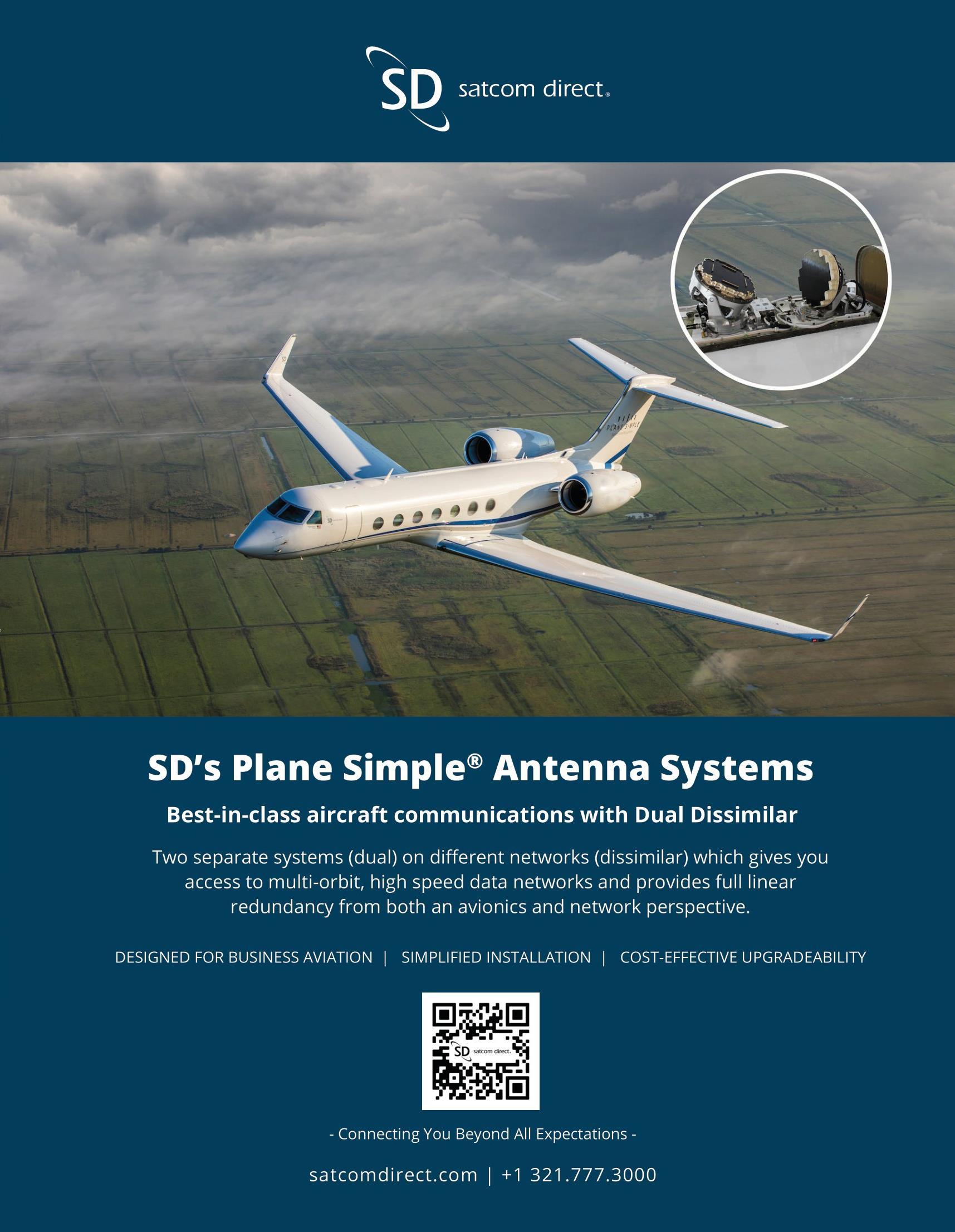 By Viswanath Tata
By Viswanath Tata






62 | ELITE WINGS MAGAZINE
CATEGORY NETWORK Gogo Satcom direct ARINCDirect HONEYWELL FORGE Viasat Select THALES FlytLINK ATG Gogo Biz 4G X ATG 5G Gogo 5G X SmartSky X SATCOM LEO OneWeb X X SATCOM L-Band Inmarsat SBB X X X X Inmarsat Swiftjet X X X SATCOM KU-Band Viasat Ku-Band X X X SES LuxStream X Intelsat FlexExec X SATCOM KA-Band Inmarsat JX X X X Viasat Ka-Band X X X X Inmarsat JX Evolution X X 2023 NETWORKS OFFERING satcomdirect.com | +1 321.777.3000 business.gogoair.com |+1 888.328.0200 arincdirect.com |+1 866.321.6060 Viasat.com|+1 844.702.3199 Aerospace.honeywell.com|
BIZAV CONNECTIVITY SERVICE PROVIDERS GUIDE
In October 2021, Bombardier announced Collins Aerospace as its Preferred Service Provider (PSP) for Cockpit and Cabin Connectivity Services. With this new agreement, customers who choose to subscribe to Collins’ ARINCDirect flight deck and cabin connectivity services, can view and manage their connectivity subscriptions through ARINCDirect digital tools, which will be integrated into Bombardier’s digital platform for a seamless, connected aircraft experience. Bombardier customers and operators will also benefit from comprehensive year-round, onsite connectivity support from ARINCDirect representatives at Bombardier’s service facilities This announcement followed the addition of Viasat Ka-band IFC offering to ARINCDirect business aviation connectivity solutions portfolio, allowing ARINCDirect to support all Line-fit and RetrofitconnectivitysolutionsofferedbyBombardier.

In June 2021, Honeywell announced its selection as an authorized value-added reseller for SmartSky Networks’ air-toground services for North American business aviation operators. This agreement expands Honeywell’s work with SmartSky, which began in 2019 when Honeywell was named a value-added reseller by SmartSky for the commercial aviation market. SmartSky connectivity services will be integrated with Honeywell Forge software and services platform and customers can select Honeywell GoDirect for use on the SmartSky Network.

Viasat Select
At 2021 NBAA. Viasat announced the launch of Viasat Select. The first direct service model for business aviation from a satellite network operator. the new service introduces custom connectivity solutions and compelling service plans that are tailored to match business aircraft's specific operational profile. The Viasat Select service plans include global and regional unlimited plans that feature uncapped data paired with Viasat's popular "No Speed Limit" Ka-band IFC. In addition to offering its new direct service, Viasat will continue to offer Ka-band service through its network of value-added resellers (VARs), ensuring operators have multiple options for procuring their industryleading IFC service and the ability to utilize additional services offered by Viasat's VARs.

ELITE WINGS MAGAZINE | 63
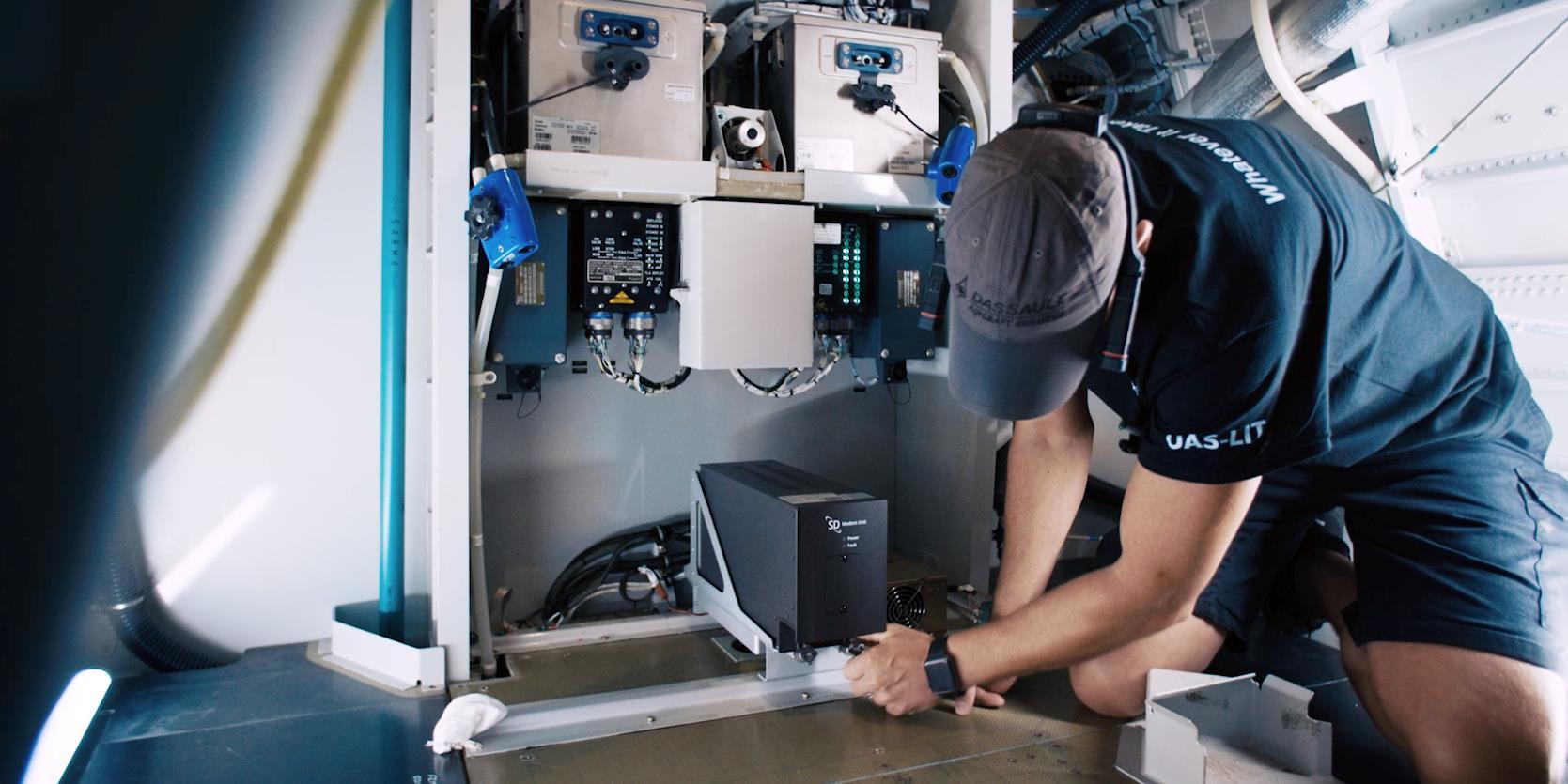


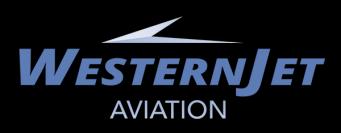


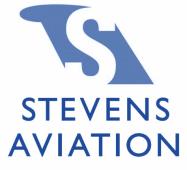

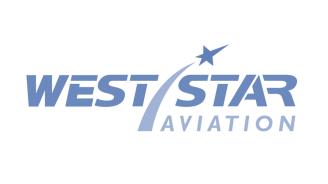

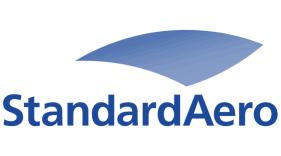


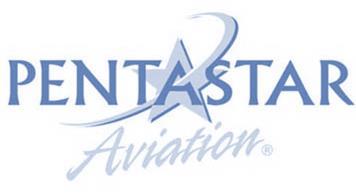


64 | ELITE WINGS MAGAZINE Picture © Satcom Direct CONNECTIVITY HARDWARE SALES & INSTALLATION ELITE WINGS MAGAZINE

BIZLINERS CONNECTIVITY UPDATE
By Abdelmajid Jlioui
Connectivity systems installation and/or upgrade is very popular with Bizliners!
According to Colby Hall, Director of Integrated Technology and MRO Sales at ALOFT AeroArchitects, “Almost every airplane coming to our hangars this year has some level of connectivity modifications, ranging from new satcom terminal installation to cabin Wi-Fi components upgrades such as Routers, Access points, Streaming servers, …etc.”

In terms of system installation especially on the 737-based BBJ platform, Colby sees primarily tail-mounted broadband installations using Lufthansa Technik TIOS - Three-In-OneSolution – tail-mounted radome where Aloft has been installing Honeywell Jetwave KA-band terminal. This hardware allows Bizliners to connect to Inmarsat’s Jet ConneX, the first consistent high-speed broadband service to span the world. According to Colby, “Usually, customers will also add a fuselage-mounted L-band Iridium terminal for cockpit usage since iridium is perfect for CPDLC and FANS usage”.
Talking about the latest trends, Aloft has seen recently more and more customers replacing their legacy tail-mounted L-band SBB systems with a Ka-band broadband solution and transferring the L-band cockpit functions to an iridium terminal, saving weight and reducing the system complexity.
In addition to these typical installations, Aloft has installed almost every variant of connectivity solution available for either business or commercial aviation such as Panasonic eXConnect and Intelsat 2Ku (the ex-commercial offering from Gogo)

66 | ELITE WINGS MAGAZINE
ELITE WINGS MAGAZINE
Aloft has installed almost every variant of connectivity solutions available for either business or commercial aviation on BBJs
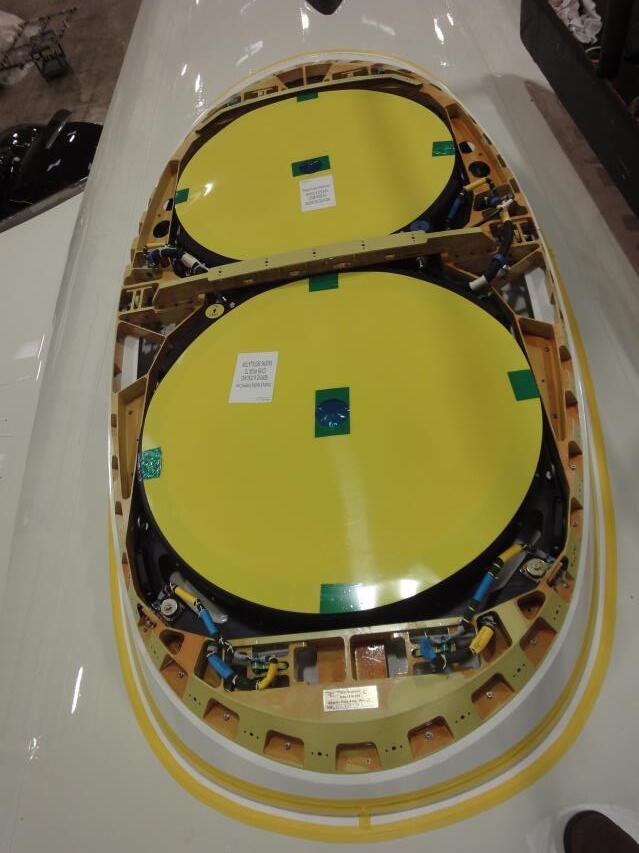


ELITE WINGS MAGAZINE | 67
Tail-mounted Honeywell JetWave installation on a Boeing BBJ using TIOS radome
Fuselage-mounted Intelsat 2Ku
Wireless Network Design Constraints In Bizliners VIP Cabins
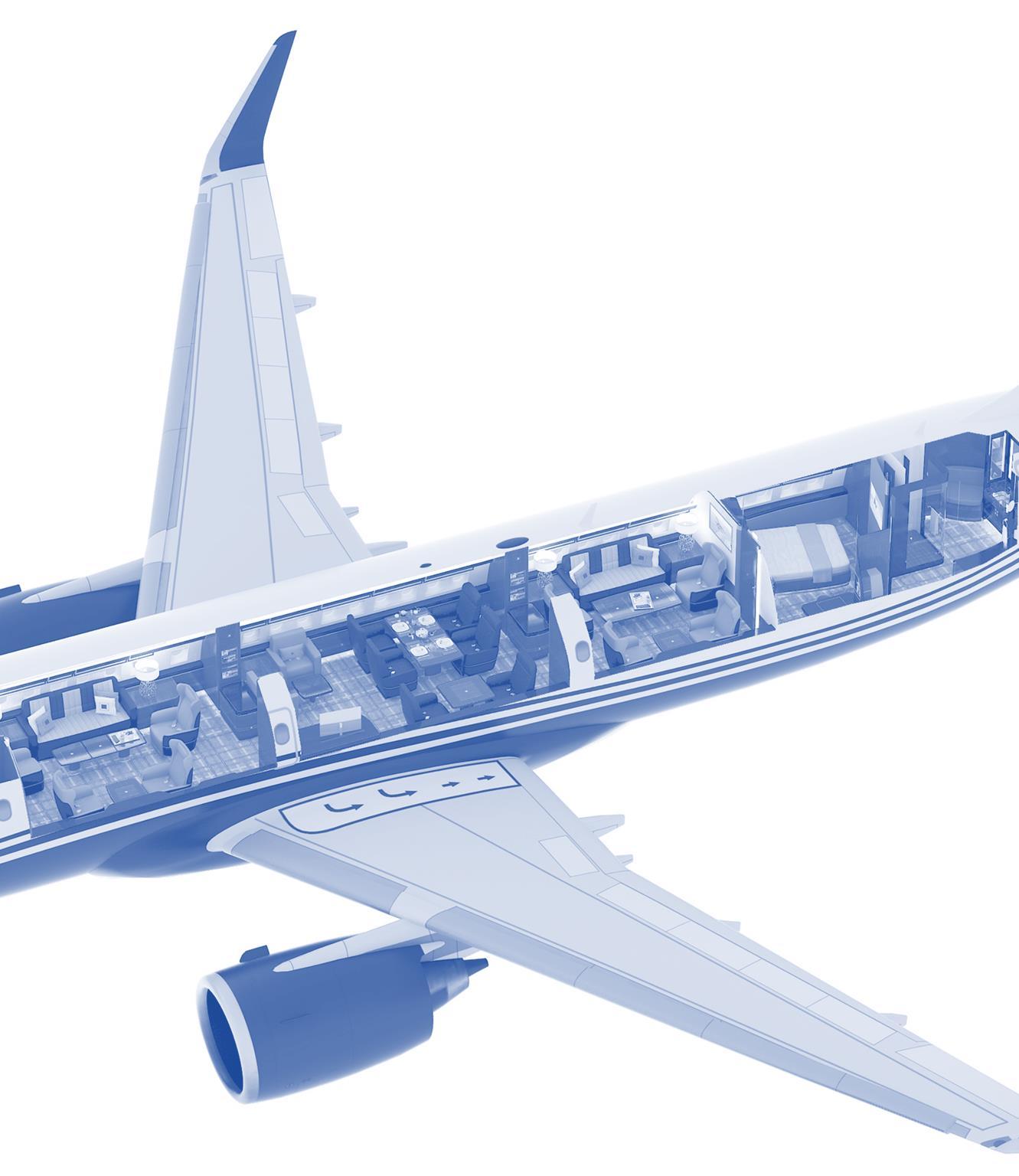
ALOFT AeroArchitects has developed a special report that analyzes the operational theory and related basic design constraints and limitations when installing wireless local area networks (WLAN) into VIP aircraft cabins. The report addresses complexities that should be considered during the design phase such as material selections, antenna placements, end-user device limitations, radio interference, and acoustic noise.
Example: Interior Material Interference.
Honeycomb aluminum and composite structures dominate aircraft designs for flooring, bulkheads, ceiling panels and other installed locations within the aircraft interior. For instance, aluminum honeycomb panels are one of the most common materials for aviation floorboards. Aluminum honeycomb is also the basic construction method to shield military infrastructures from electromagnetic interference (EMI). This means that aircraft with aluminum honeycomb structures installed are inadvertently creating a shielded ‘signal cage’ within the aircraft tube. Each honeycomb panel will attenuate the WLAN signal based on thickness, construction and orientation to the antenna and receiver.
“A typical VIP interior wireless access point (WAP) antenna is installed in the ceiling, typically in proximity to additional structure, and with a ceiling panel between it and the cabin. A user device is in a segregated room with a single aluminum panel bulkhead or door. ALOFT studies show that a user can expect a minimum loss of 17.75db, which equates to about five to six times loss in power”
ELITE WINGS MAGAZINE | 68
“ ”
The on-board Wi-Fi performance is a collective result of installed equipment capability, the configuration of the components to reduce ‘throttling points’, locations of the equipment, materials in the environment and even end-user device capability
BIZLINERS CONNECTIVITY UPDATE
Due to their size, Bizliners can accommodate even more connectivity solutions than purpose-built bizjets, what are the latest trends in cabin connectivity installations in Bizliners?
New offerings are currently starting to emerge. They will be based on new technology antennas, new satellite constellations (GEO, MEO & LEO*) and new contractual setups. I expect Aircraft specific solutions, namely certified installation packages, to be initially available for retrofit. At some later point in time, such solutions might also become available as line-fit options with the aircraft OEMs. Most likely, such aftermarket solutions will first be realized for narrow body airframes, consisting of an electronically steerable antenna terminal capable of “talking” to a satellite in GEO, a constellation of many satellites in LEO or a hybrid solution working on both types of satellites. Additionally, that will allow for new pricing models not known from classical offerings in the past.
Connectivity system selection and installation is often part of the initial cabin interior completion of bizliners. How can operators make sure these systems will allow for future upgrades?
Currently available solutions offer aircraft installations,
The TIOS radome solution has proven very popular with BBJ operators. Beate Rehberg, Product Manager TIOS at Lufthansa Technik explain what is the advantage of this solution vs fuselagemounted ones.

TIOS (short for: Three-In-One-Solution for Ka-, L- and Ku-band) offers multiple benefits. Aside of the option to combine various antennas, it also saves space, and reduces fuselage-produced drag as well as weight.
The position on top of the tailfin moreover provides the opportunity to add additional features, for example a tail camera.
that are usually restricted to one specific connectivity contract due to technical, intellectual property and contract restrictions. Performance, service level guarantees and pricing are thus hardly comparable. Therefore, upgrades of existing systems are often limited to those solutions provided by the initially chosen provider itself. The change of the connectivity provider so far is exclusively possible by removing the full installation, followed by a completely new installation. Consequently, such a change is a costly undertaking. Latest activities by the Seamless Alliance intend to offer a more structured way to compare offerings, especially the level of performance and experience available to the individual passenger.
One question that we have often heard from VVIP and government operators is the ability to upgrade their connectivity systems on the field, does LHT offers MRT service for that purpose?
The physical installation of a connectivity system usually would take an aircraft layover of three to eight days. Depending on the regulation of the specific country, with respect to aviation regulations and workers health regulations, there are limited possibilities for installations in the field. Lufthansa Technik is available for such services; however, such upgrades would mostly be carried out during scheduled downtimes for the sake of cost optimization.
69 | ELITE WINGS MAGAZINE
Lukas Bucher, Head of Product Connectivity at Lufthansa Technik answers EWM questions


© 2023 ELITE WINGS MEDIA ELITE WINGS MAGAZINE Issue 02 | 2023 WWW.ELITE-WINGS.COM WWW.ELITE-WINGS.COM VISIT THE ONLINE CONNECTIVITY GUIDE FOR THE LATEST NEWS AND UPDATES








































 By James Person, Sr. Director, Global Business Development for Business and VVIP Aviation, Viasat
By James Person, Sr. Director, Global Business Development for Business and VVIP Aviation, Viasat































 By Abdelmajid Jlioui
By Abdelmajid Jlioui






 By Abdelmajid Jlioui
By Abdelmajid Jlioui

























































 By Viswanath Tata
By Viswanath Tata































